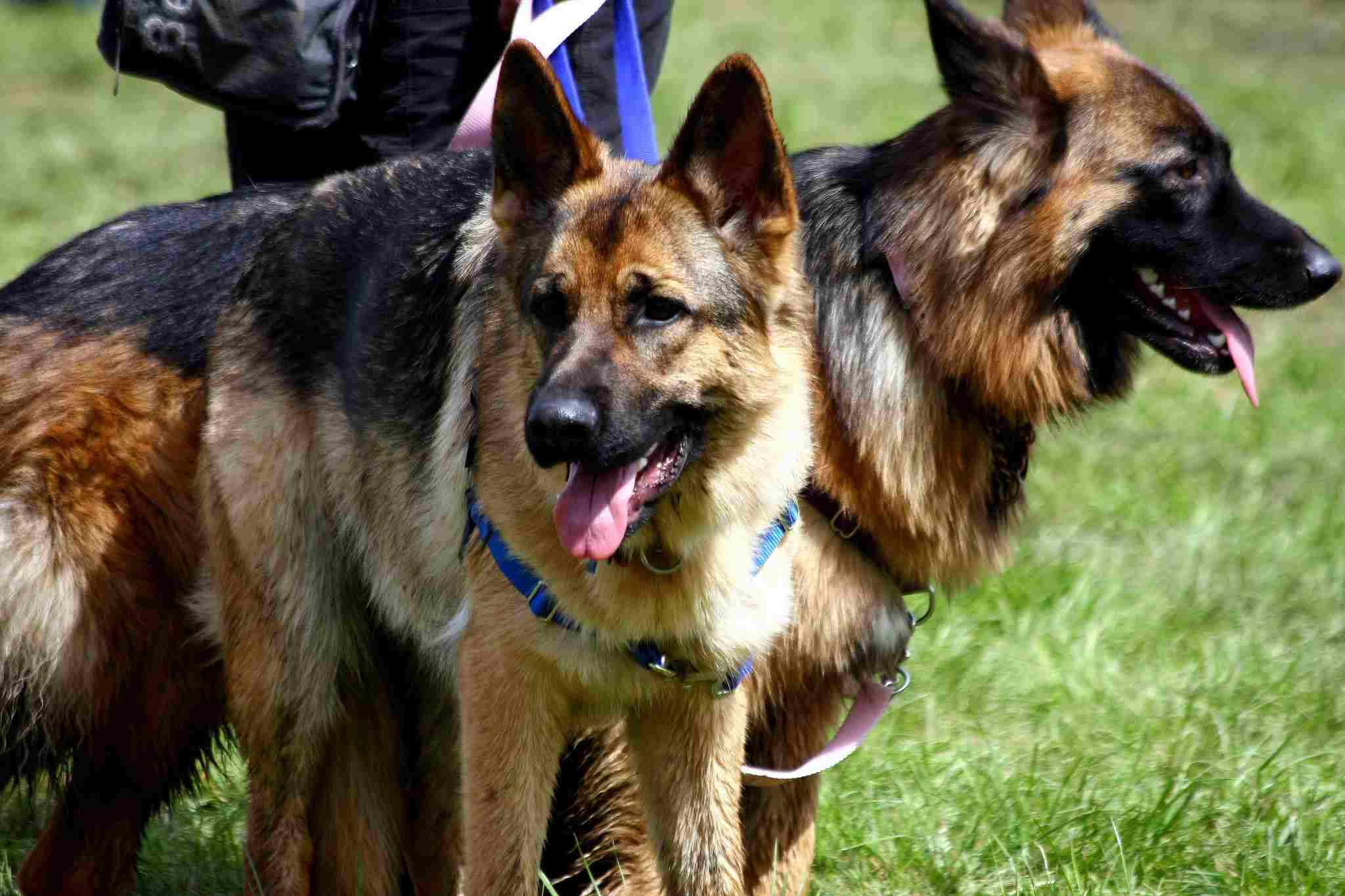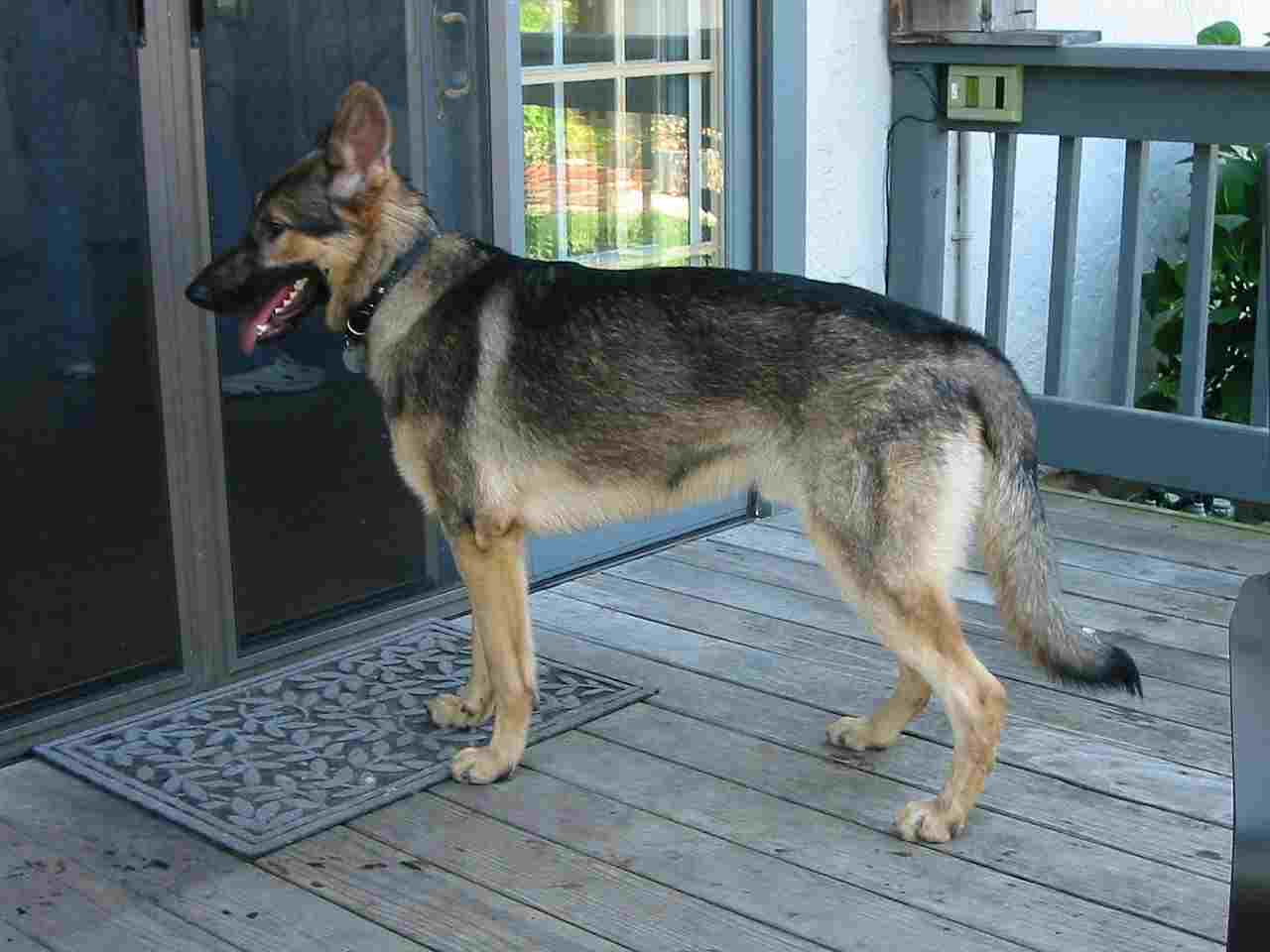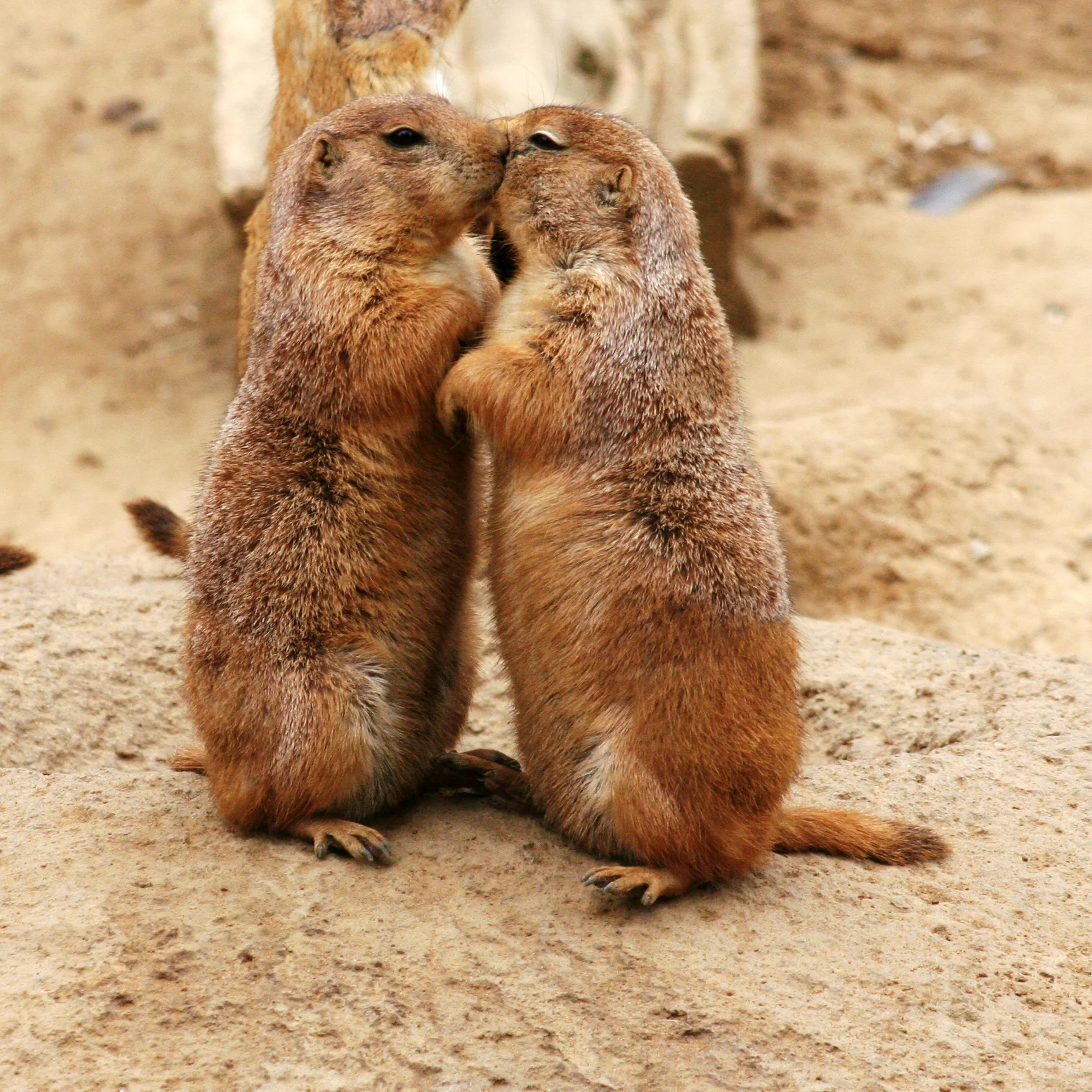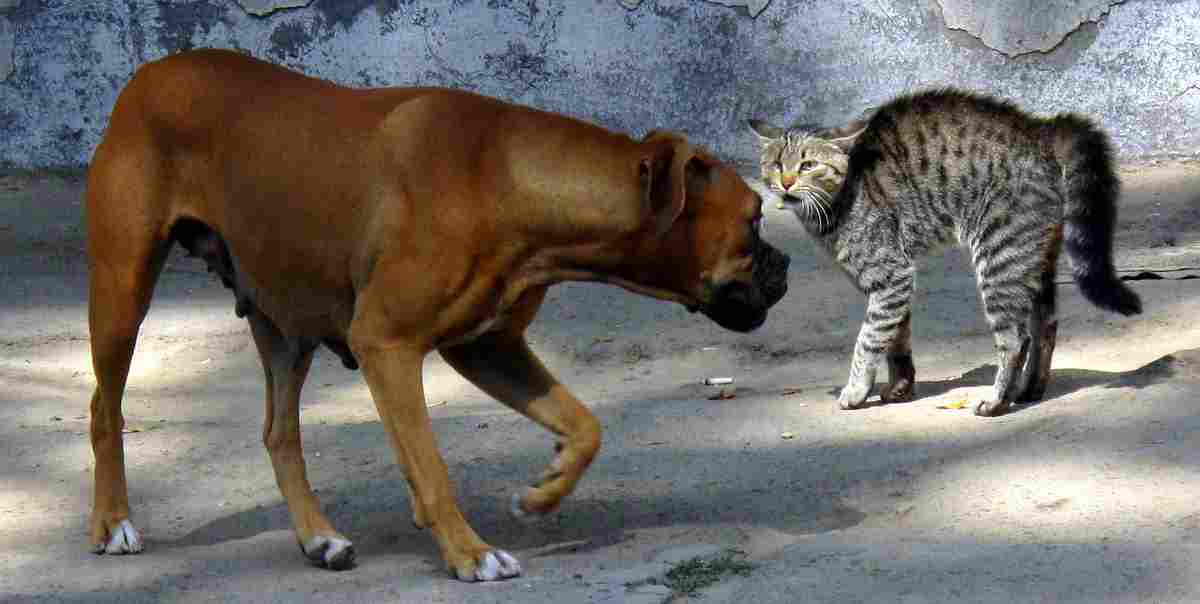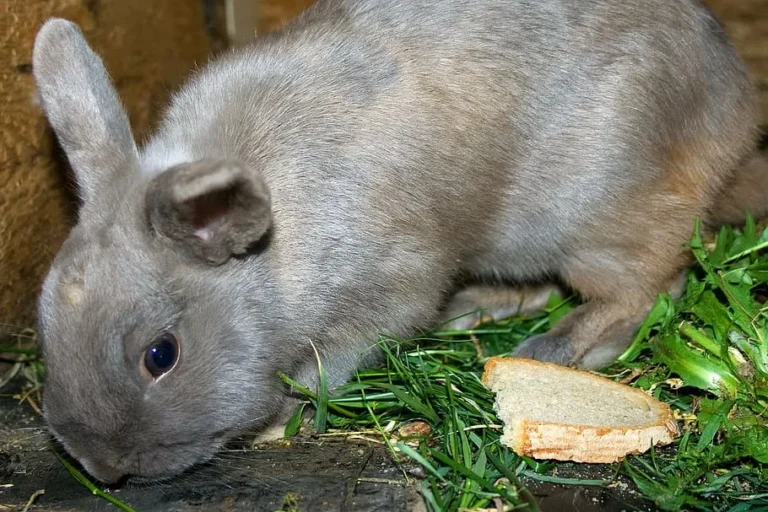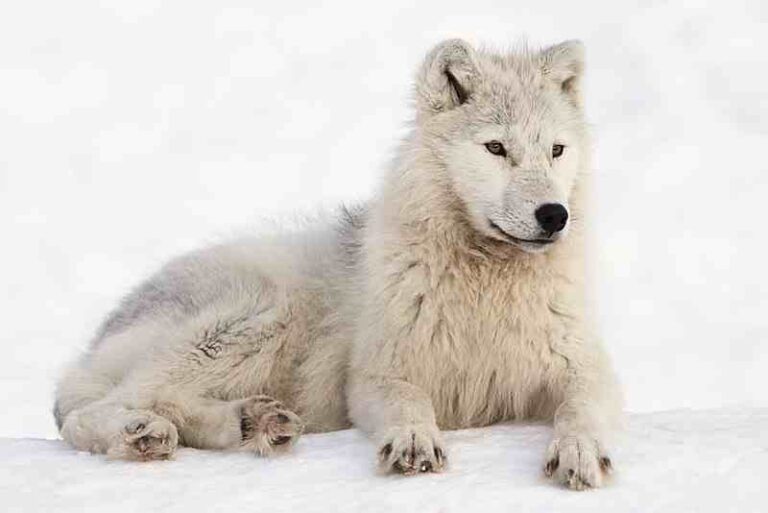Groundhog Vs Dog Size, Weight, Overall Comparison
Groundhogs and dogs, both sharing our living spaces, may occasionally cross paths. While they have distinct characteristics and behaviors, understanding the dynamics between these animals is essential for pet safety and coexistence.
I. Physical Dynamics:
– Small breed dogs lack the size and power to overwhelm a groundhog like larger breeds. The encounter often results in a face-to-face standoff rather than a dog attacking from above, given the groundhog’s ability to defend itself. On the other hand, large dog breeds lie German Shepherd, are capable of overpowering and killing groundhogs.
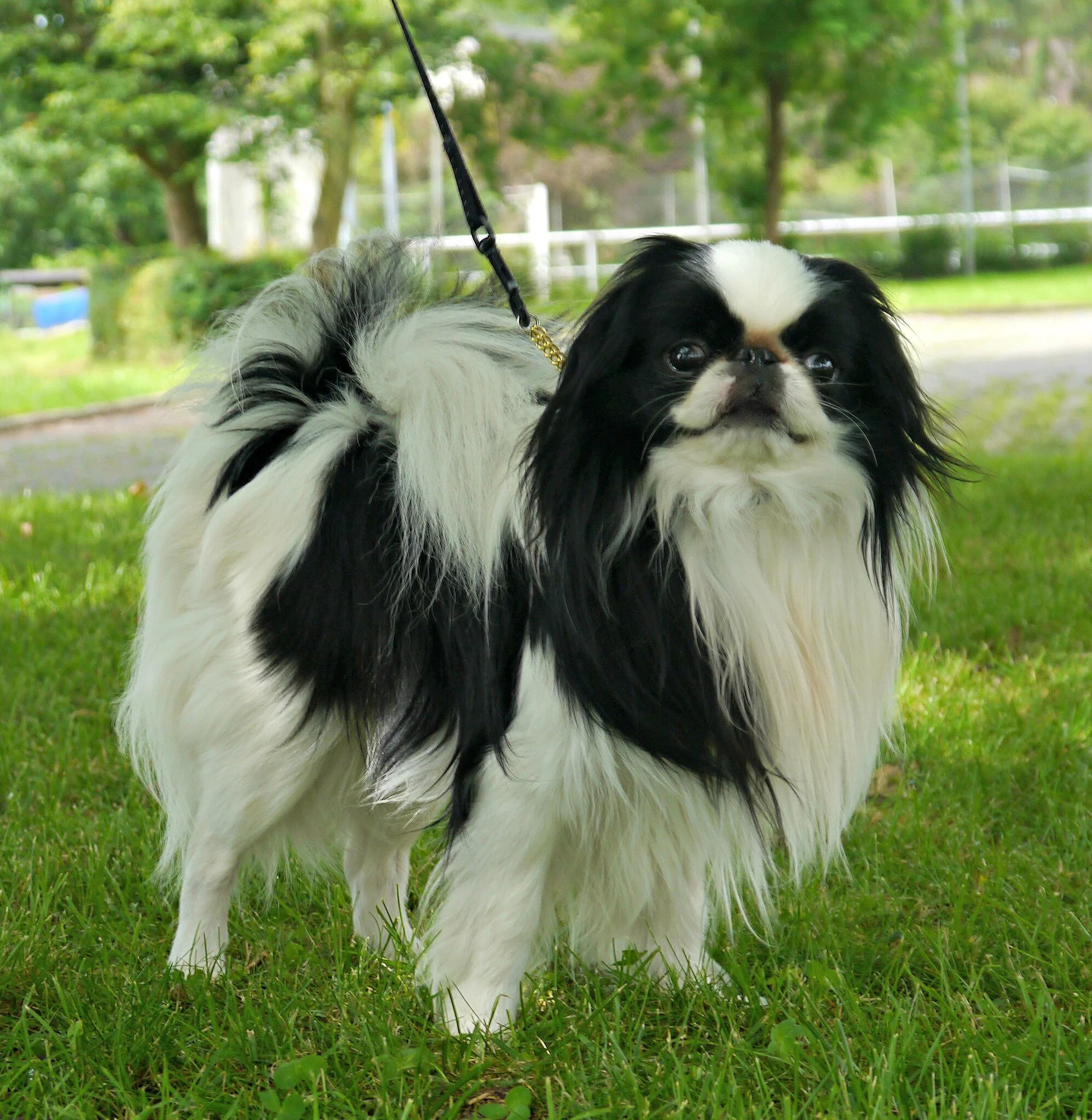
II. Threat Perception:
– Groundhogs typically won’t attack a dog unless they feel threatened and cornered. In self-defense, a groundhog may stand its ground and engage in a defensive posture. However, most encounters between dogs and groundhogs do not escalate to physical conflict.
On the other hand, it is not very uncommon for dogs with a strong chasing-and-hunting instinct to attack groundhogs when they spot them.
III. Power Disparity:
– While a groundhog may not win in a direct confrontation with a dog, it can still inflict some damage if provoked. Dogs, especially larger breeds, possess the physical advantage, but groundhogs exhibit defensive behaviors such as standing their ground and using their claws for protection.
IV. Human Intervention:
– Pet owners are advised to monitor interactions between dogs and groundhogs to prevent confrontations. If a dog shows interest or aggression towards a groundhog, it’s essential to intervene to avoid potential injuries to both animals.
V. Cultural and Folklore References:
– While groundhogs are known for their role in Groundhog Day predictions, they also exist in cultural references related to encounters with dogs. Folklore may include stories or anecdotes about such interactions, emphasizing the need for caution.
VII. Species Identification:
– Distinguishing groundhogs from other related animals, such as prairie dogs, is crucial. Groundhogs are typically larger, weighing up to nine pounds and measuring around 26 inches, distinguishing them from prairie dogs.
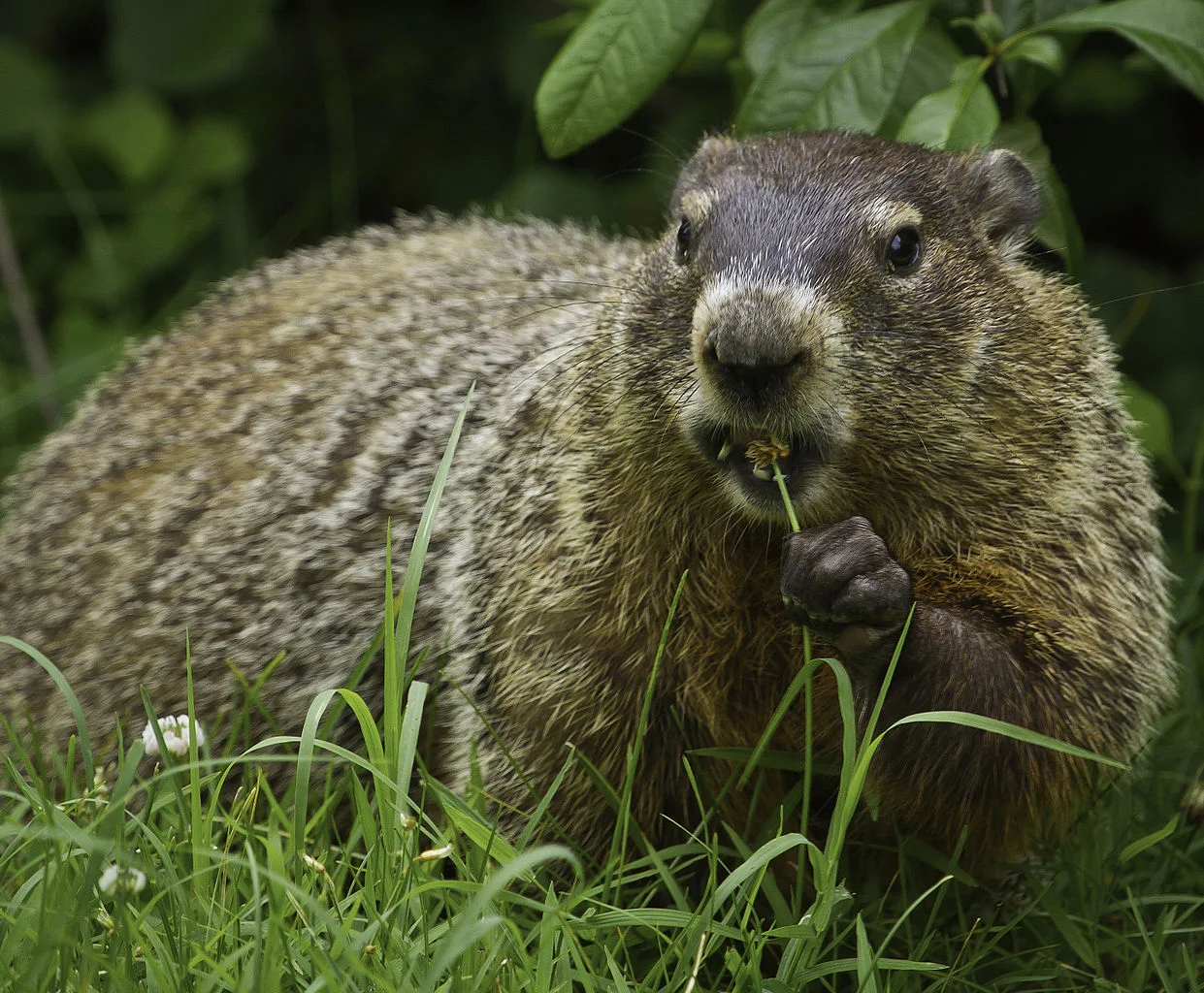
*Details of Comparison
| Criteria | Groundhog | Dog |
| Appearance | Stout build, brown fur, adapted for burrowing |
Diverse appearances based on breeds
|
| Size | 16 to 26 inches, 4 to 9 pounds |
Varies widely by breed, classified sizes
|
| Weight | Consistent range, 4 to 9 pounds |
Broad spectrum, reflects roles and breeds
|
| Dentition & Bite Force | Herbivorous, limited bite force |
Carnivorous, variable bite force by breed
|
| Offensive Advantages | Claws for digging, biting if threatened |
Varied offensive capabilities by breed
|
| Defensive Advantages | Agility, burrow construction |
Varied defensive behaviors, loyalty
|
| Speed | Moderate speed for survival |
Wide range of speeds, breed-dependent
|
| Agility | Highly agile for wooded environments |
Varying agility based on breed purposes
|
| Senses | Reliant on smell, good hearing, and vision |
Diverse sensory strengths based on breeds
|
| Physical Capacity | Specialized for burrowing and agility |
Versatile capacities influenced by breed
|
| Habitat Preference | Wooded areas, common in North America |
Adaptable to various habitats, breeds
|
| Tracks | Distinctive with claw marks, bipedal movement |
Diverse tracks, lack groundhog patterns
|
| Lifespan | 2 to 3 years in the wild |
Varied by breed, impacted by size, genes
|
| Feeding | Herbivores with occasional insect consumption |
Originally carnivores, adapted diets
|
| Intelligence | Problem-solving for burrow construction |
Varying intelligence, trainable
|
| Social Behavior | Generally solitary, brief social interactions |
Highly social, forming bonds with humans
|
| Reproduction | Monogamous with smaller litters |
Breeding practices vary, diverse litters
|
| Parental Behavior | Maternal care, protection in burrows |
Varied parental behaviors by breed
|
| Proximity to Humans | Adaptable to suburban and urban areas |
Common in human-inhabited areas
|
| Behavior Toward Humans | Shy, wary, may display aggression if threatened |
Diverse behaviors based on breed, training
|
| Danger Posed to Humans | Minimal danger, may bite if threatened |
Variable danger levels based on factors
|
| Associated Precautions | Minimize interactions, secure attractants |
Responsible ownership, training, leash laws
|
| Conservation Status | Not classified, stable population |
Domesticated dogs not assessed, wild canids may have concerns
|
1. Taxonomy:
Groundhog (Marmota monax):
Kingdom: Animalia
Phylum: Chordata
Class: Mammalia
Order: Rodentia
Family: Sciuridae
Genus: Marmota
Species: M. monax
Dog (Canis lupus familiaris):
Kingdom: Animalia
Phylum: Chordata
Class: Mammalia
Order: Carnivora
Family: Canidae
Genus: Canis
Species: C. lupus familiaris
2. Appearance:
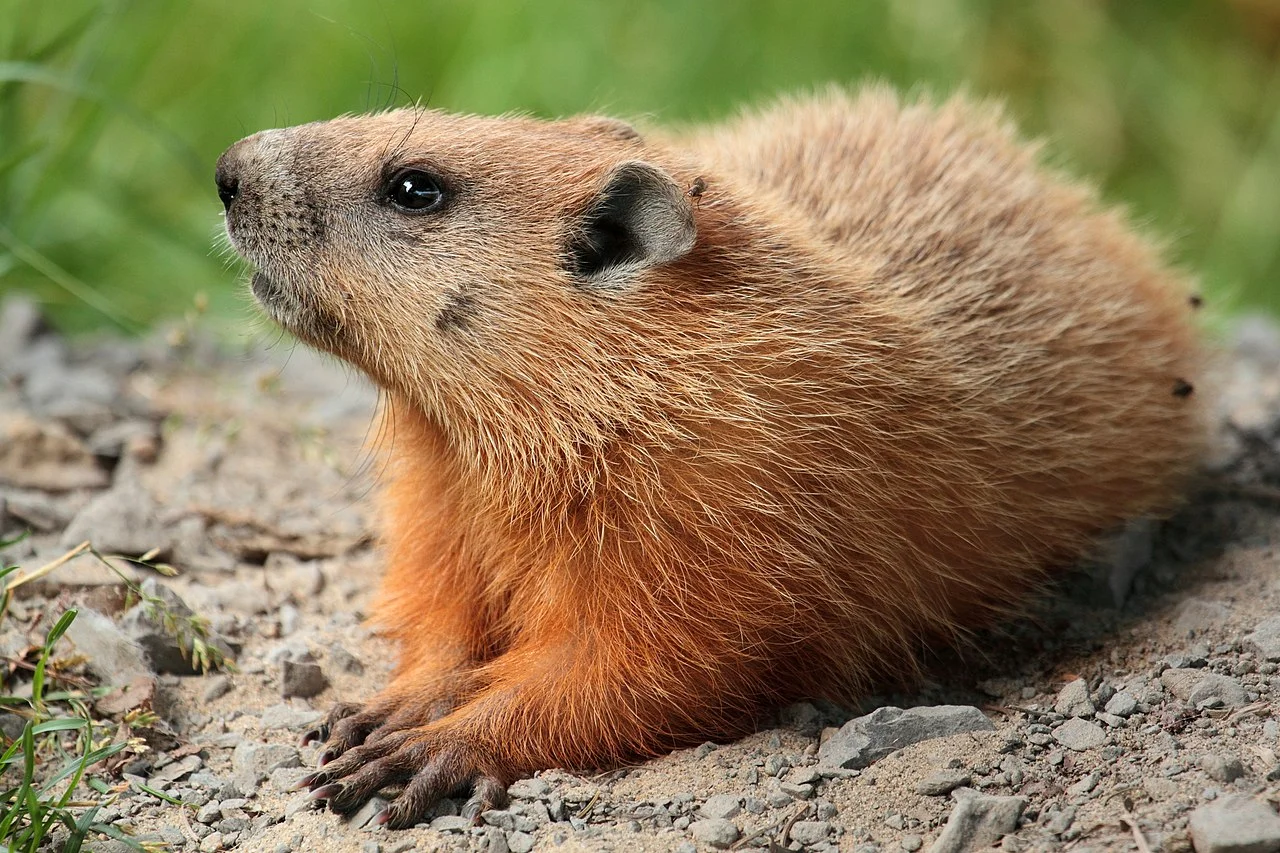
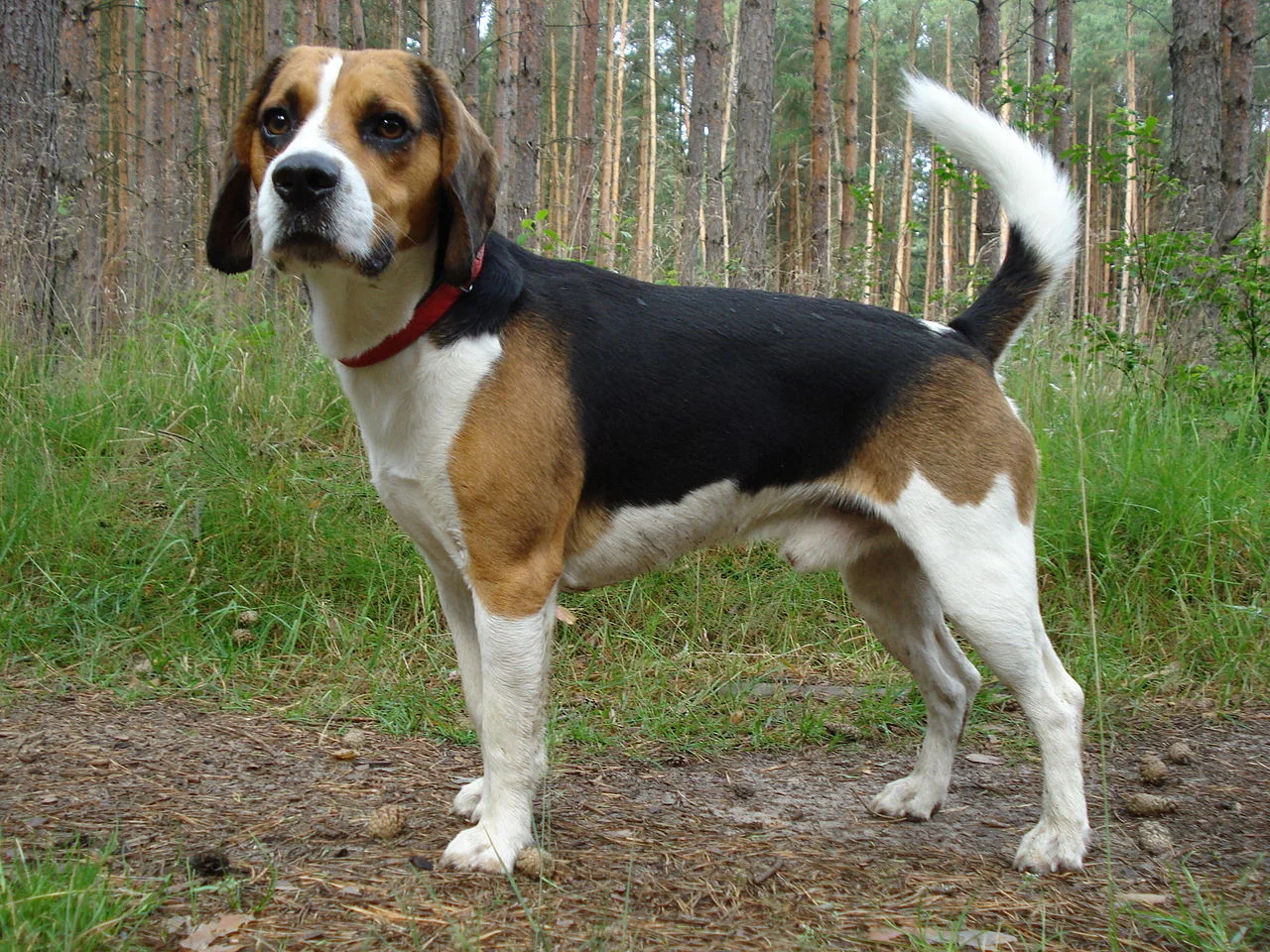
Groundhog:
Stout, low-to-the-ground build with brown fur and a short, bushy tail.
Sharp claws for digging burrows and strong, chisel-like incisors for gnawing on vegetation.
Camouflaged fur aids in blending with its woodland habitat.
Dog:
Diverse breeds with varying sizes, coat colors, and patterns.
Muzzles, tails, and ear shapes differ significantly among breeds.
Domestication has led to a wide range of appearances suited for specific tasks or aesthetics.
Comparison:
Groundhogs exhibit a more uniform appearance for survival in natural environments, while dogs showcase extensive diversity due to artificial selection.
Ecological Implications:
Groundhog appearances are adapted to their burrowing lifestyle and foraging in wooded areas.
Dog appearances are shaped by human preferences, often serving specific roles such as companionship, herding, or guarding.
3. Size:
Groundhog:
Typically around 16 to 26 inches in length, excluding the tail.
Weighs between 4 to 9 pounds, with males generally larger than females.
Dog:
Varies widely depending on the breed, ranging from a few pounds (e.g., Chihuahua) to over 100 pounds (e.g., Saint Bernard).
Sizes classified as small, medium, large, or giant based on weight and height.
Comparison:
Groundhogs are relatively small, emphasizing agility for survival.
Dogs display a broad size spectrum, reflecting their roles as working, sporting, or companion animals.
Ecological Implications:
Groundhog size is adapted for efficient burrowing and navigating through wooded areas.
Dog size is influenced by human needs, with different sizes suitable for tasks such as herding, guarding, or providing companionship.
4. Weight:
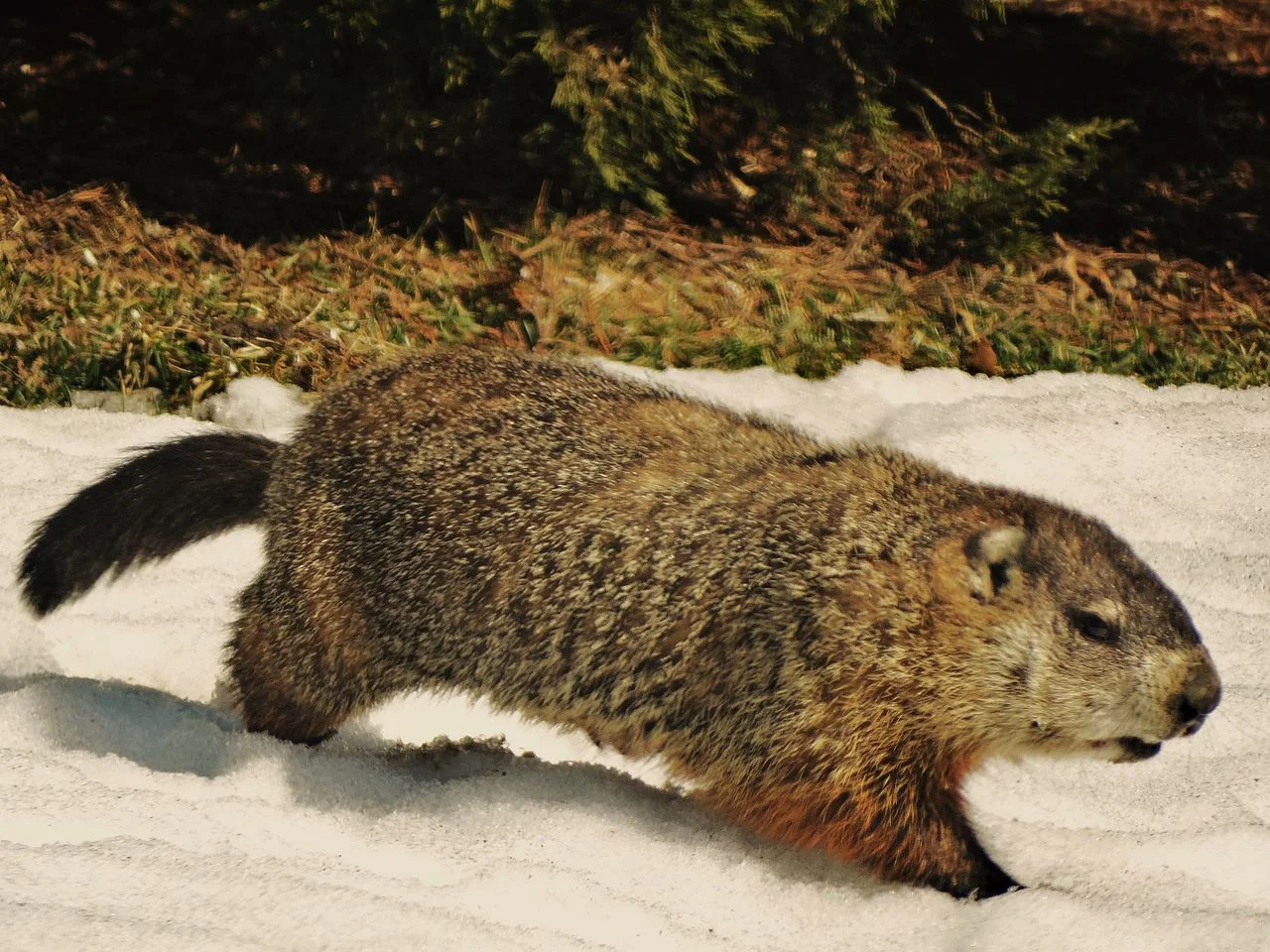
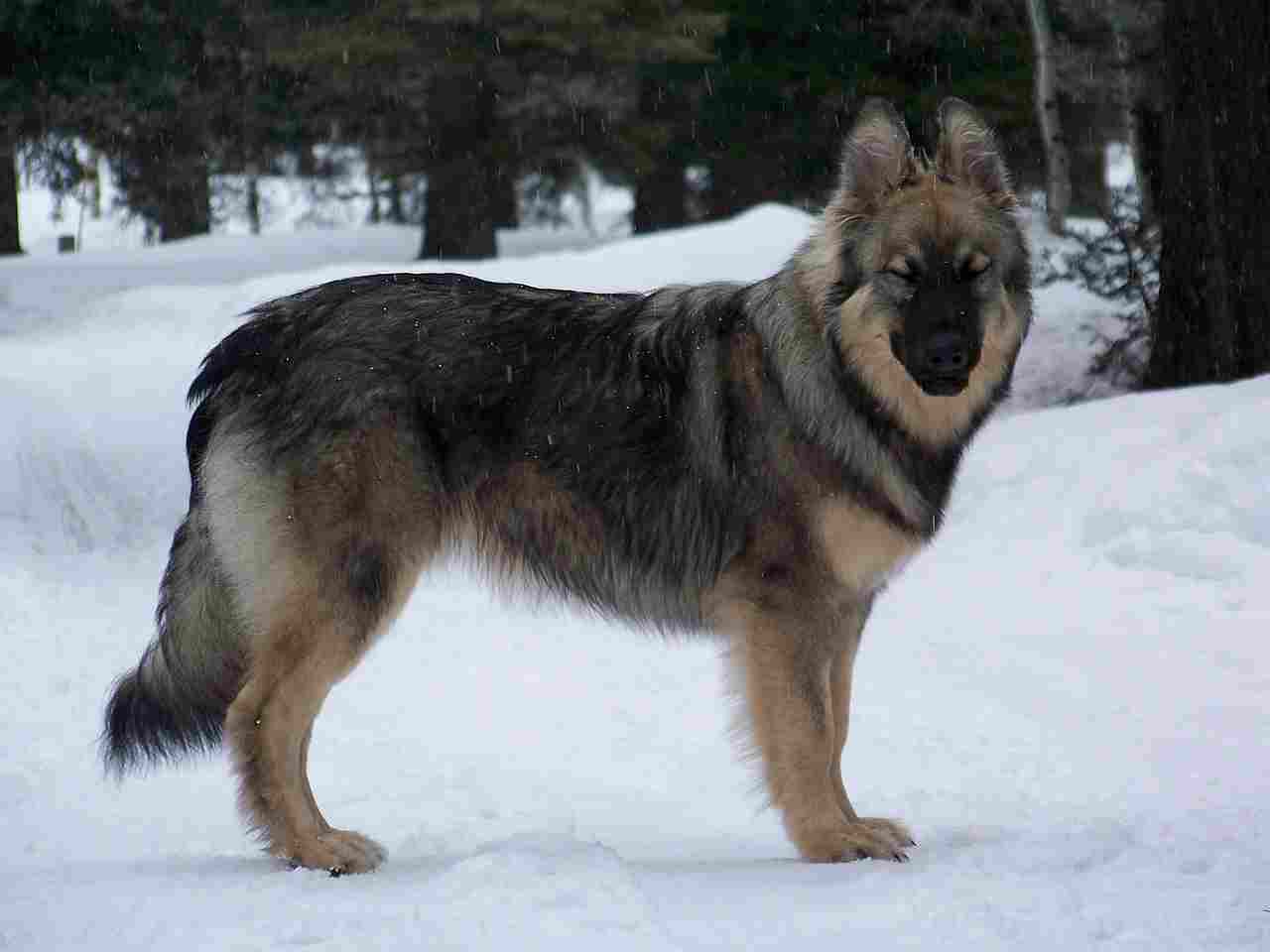
Groundhog:
Typically between 4 to 9 pounds.
Seasonal variations in weight due to hibernation and activity periods.
Dog:
Varied weights based on breed characteristics.
Breeds developed for strength or endurance may have higher weights.
Comparison:
Groundhogs generally have a more consistent weight range.
Dogs exhibit a broader weight spectrum, reflecting their diverse roles.
Ecological Implications:
Groundhog weight is optimized for efficient burrowing and energy conservation during hibernation.
Dog weight is influenced by specific roles, with larger breeds often bred for strength or protective capabilities.
5. Dentition and Bite Force (PSI):
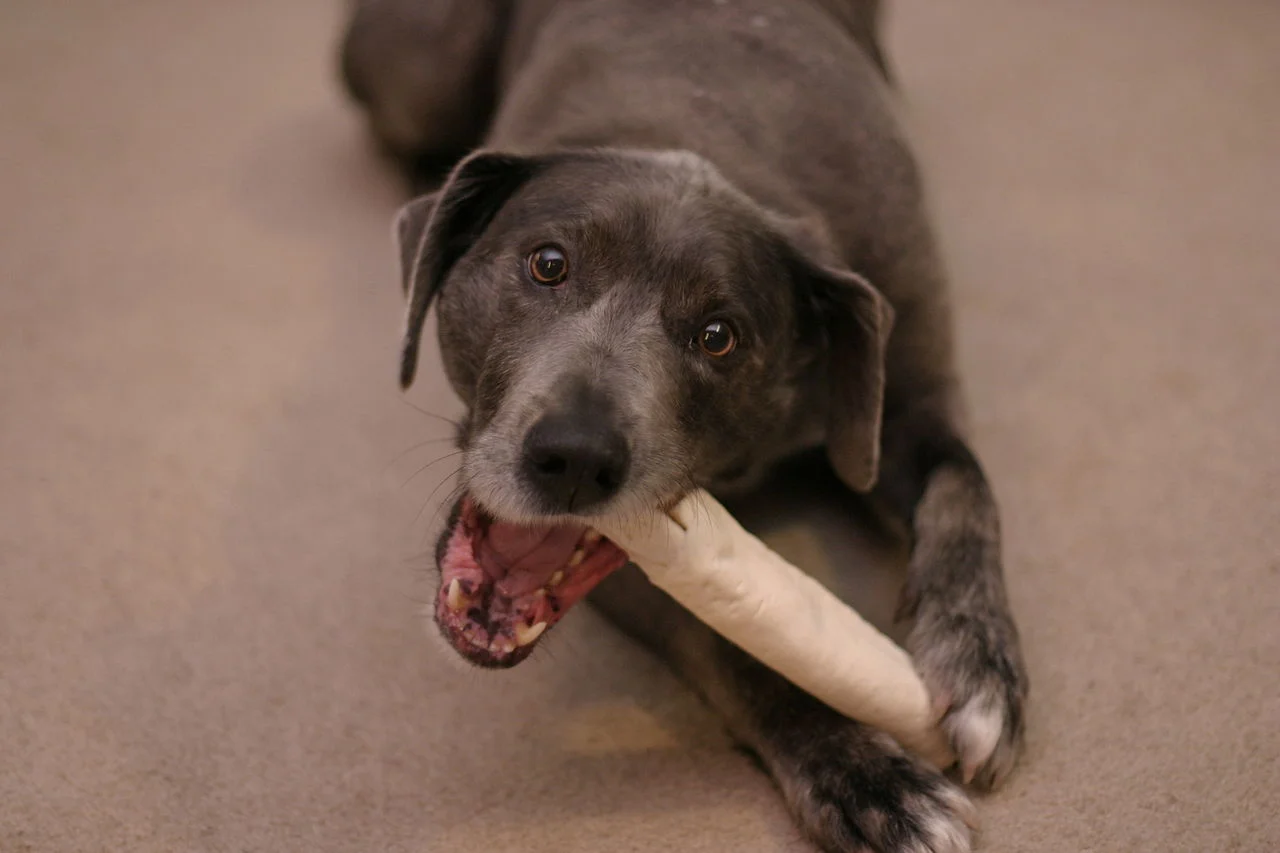
Groundhog:
Herbivorous dentition with strong, chisel-like incisors for cutting vegetation.
Limited bite force adapted for plant consumption.
Dog:
Carnivorous dentition with sharp canines for tearing flesh.
Bite force varies among breeds, with larger, working breeds having stronger bites.
Comparison:
Groundhogs have specialized teeth for herbivorous diets and burrow construction.
Dogs exhibit carnivorous dentition with varying bite forces, reflecting their diverse roles.
Ecological Implications:
Groundhog teeth are adapted for foraging on plant material.
Dog teeth and bite forces align with their roles, from hunting to guarding, depending on the breed.
6. Physical Offensive Advantages:
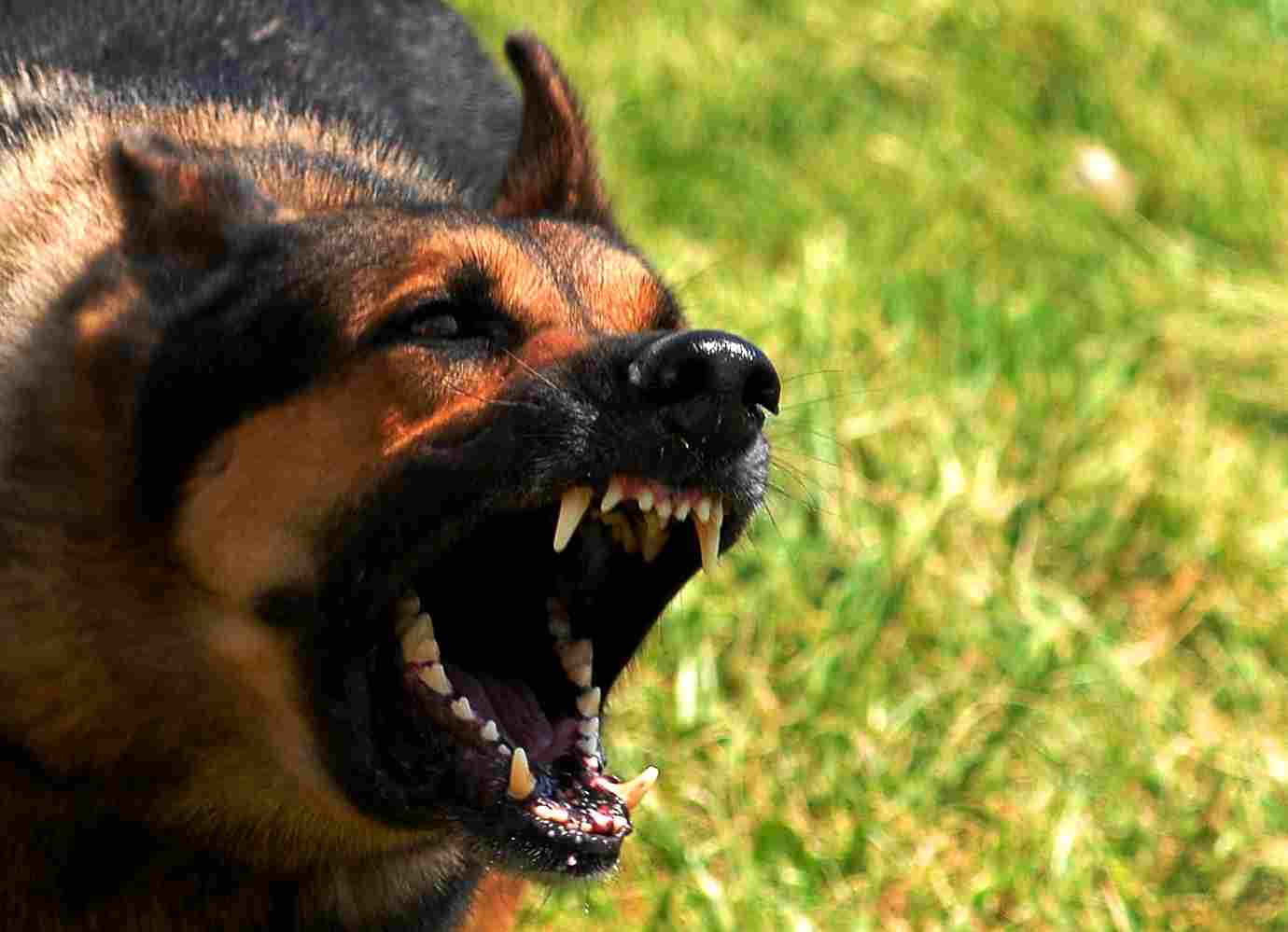
Groundhog:
Sharp claws for digging burrows and escaping predators.
Can deliver bites with strong incisors if threatened.
Dog:
Varied offensive capabilities depending on breed:
Sharp teeth and strong jaws for biting (guard dogs).
Swift running and chasing instincts (sighthounds).
Powerful limbs for herding or working (herding dogs).
Comparison:
Groundhogs rely on digging and biting as defensive strategies.
Dogs possess diverse offensive adaptations based on breed functions.
Ecological Implications:
Groundhog adaptations are centered around burrow defense and evasion.
Dogs’ offensive advantages align with their historical roles, whether guarding, herding, or hunting.
7. Physical Defensive Advantages:
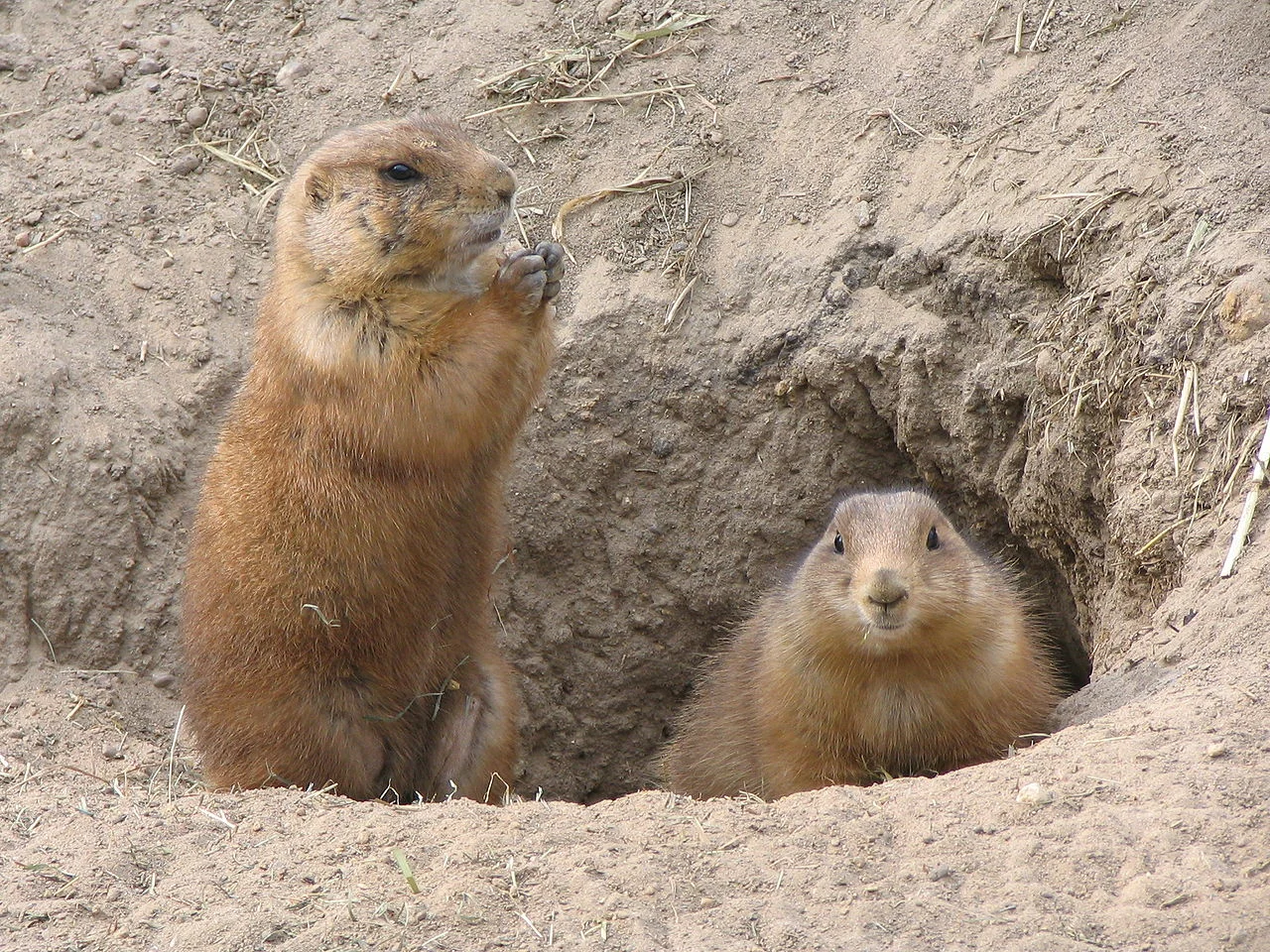
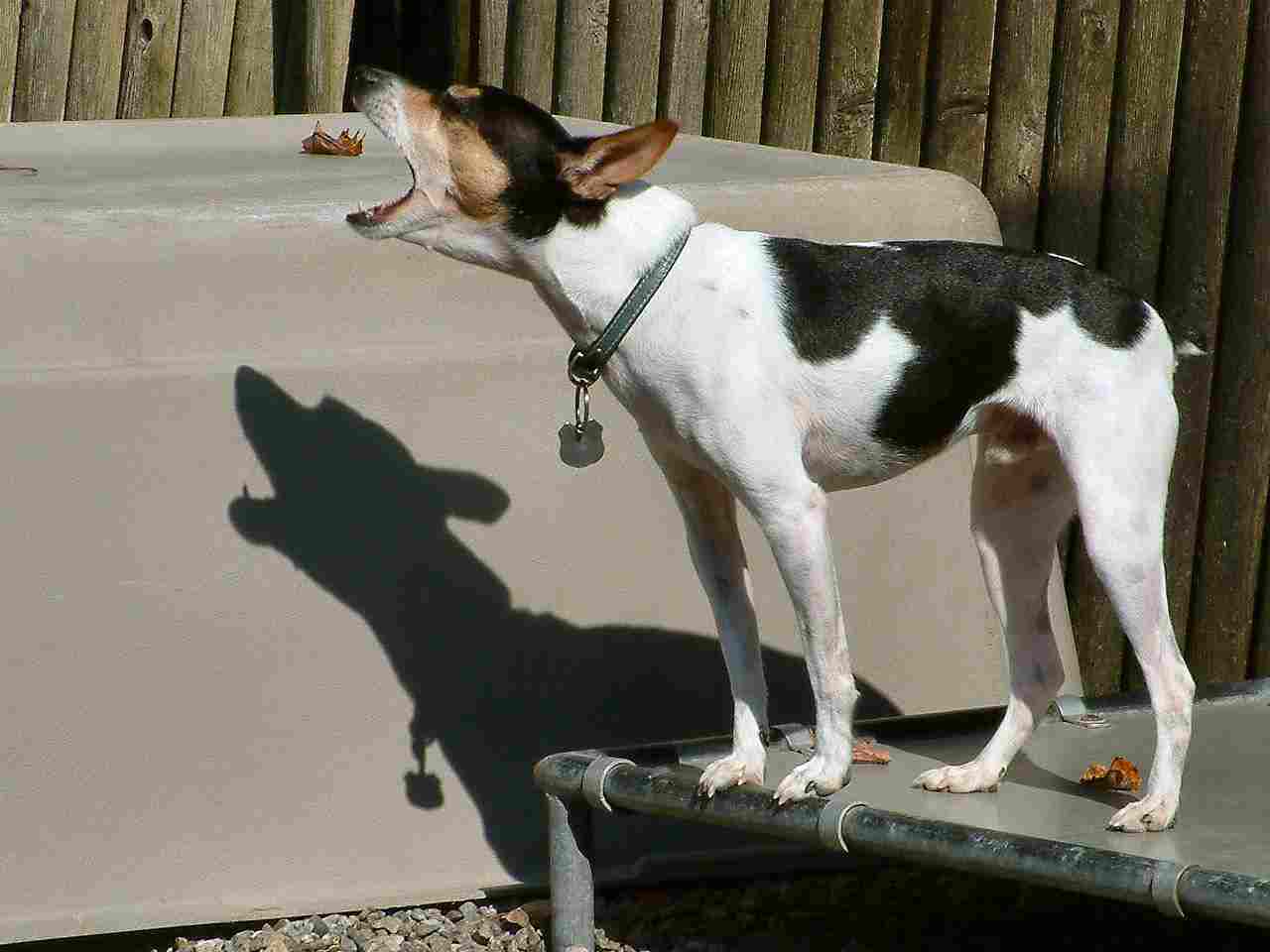
Groundhog:
Quick and agile movements for evading predators.
Burrow construction as a primary defensive strategy.
Dog:
Varied defensive tactics:
Barking and intimidation (guard dogs).
Agility and evasion (smaller breeds).
Loyalty and protective instincts.
Comparison:
Groundhogs emphasize agility and burrow usage for defense.
Dogs exhibit a range of defensive behaviors, often influenced by training and breed characteristics.
Ecological Implications:
Groundhog defenses are tailored to escape predators in wooded environments.
Dogs’ defensive behaviors are shaped by their roles as companions or working animals.
8. Speed (Km/hour or Mile/hour):
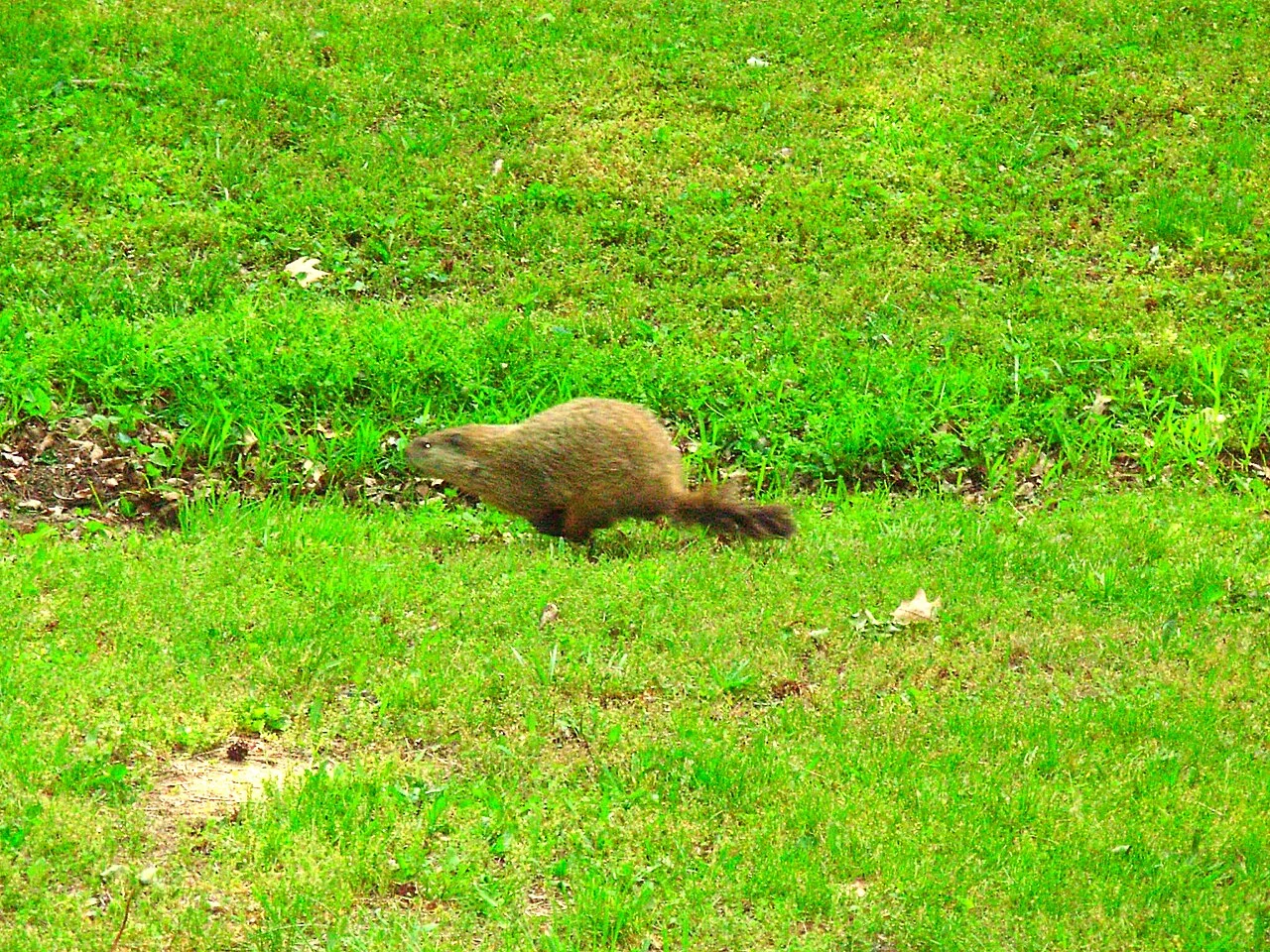
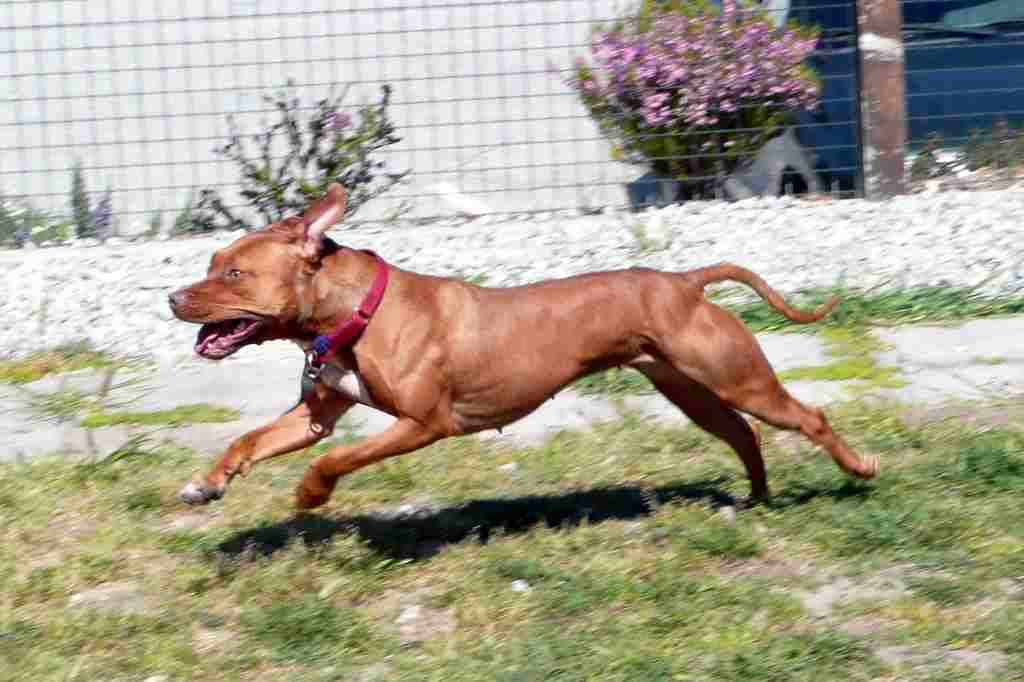
Groundhog:
Decent speed for short bursts, capable of evading predators.
Dog:
Varies significantly among breeds:
Sighthounds, like the Greyhound, can reach speeds of 40-45 mph.
Working dogs may have moderate speeds suitable for their tasks.
Comparison:
Groundhogs have moderate speed optimized for survival in wooded areas.
Dogs showcase a wide range of speeds, reflecting their roles as hunters, herders, or companions.
Ecological Implications:
Groundhog speed is adapted for quick escapes in wooded terrain.
Dogs’ speed correlates with their specific functions, whether it’s chasing prey or performing specific tasks.
9. Agility:
Groundhog:
Highly agile, capable of navigating through dense vegetation.
Quick reflexes for evading predators and maneuvering in burrows.
Dog:
Agility varies across breeds:
Herding dogs often exhibit exceptional agility.
Breeds developed for specific tasks may have specialized agility.
Comparison:
Groundhogs are naturally agile, essential for survival in their habitat.
Dogs demonstrate varying levels of agility, influenced by breeding purposes.
Ecological Implications:
Groundhog agility aids in navigating forested environments and escaping predators.
Dogs’ agility is often linked to their historical roles, whether it’s herding, hunting, or performing specific tasks.
10. Senses:
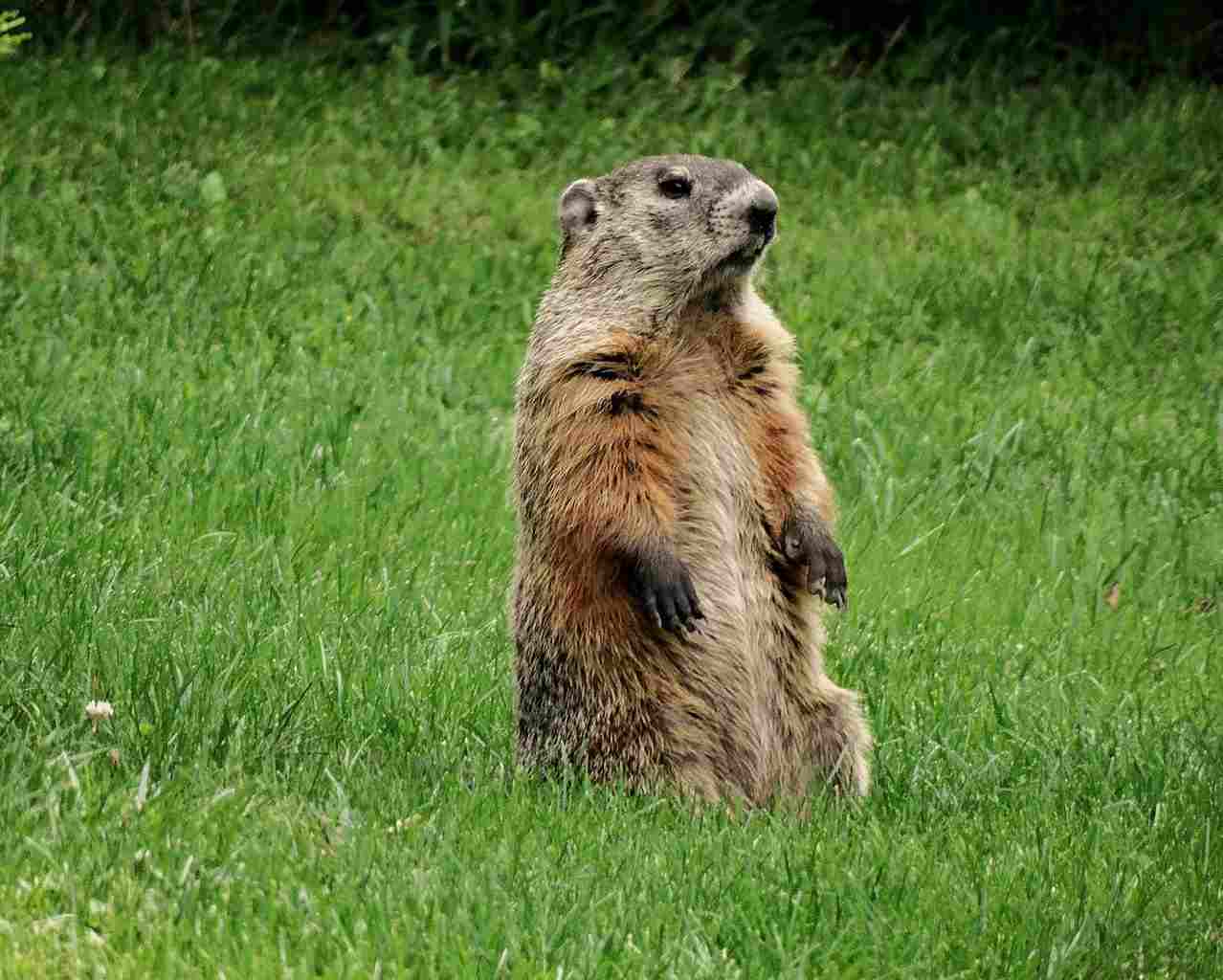
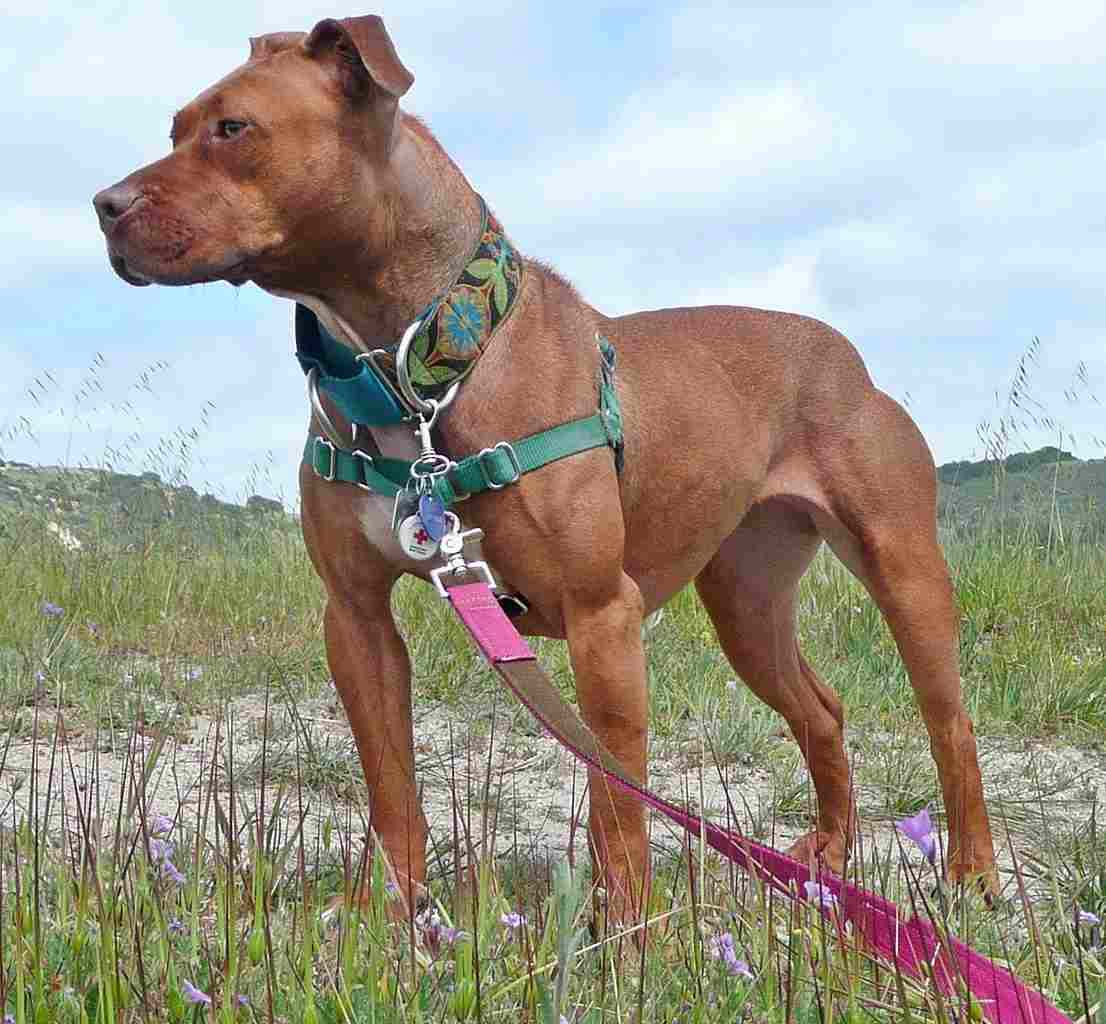
Groundhog:
Excellent sense of smell for detecting predators and finding food.
Good hearing and vision, though not as acute as their sense of smell.
Dog:
Varied senses depending on breed:
Keen sense of smell, particularly in scent hound breeds.
Acute hearing, especially in breeds used for guarding or alerting.
Comparison:
Groundhogs heavily rely on their sense of smell for survival.
Dogs exhibit diverse sensory strengths based on their roles and breeds.
Ecological Implications:
Groundhog senses are adapted to detect predators and locate food sources in wooded areas.
Dogs’ sensory adaptations align with their roles, whether it’s tracking scents, detecting threats, or alerting humans.
11. Overall Physical Capacity:
Groundhog:
Specialized for burrowing, with strong claws and incisors.
Well-adapted for short bursts of speed and agile movements.
Dog:
Versatile physical capacities based on breed:
Strength and endurance for working or guarding breeds.
Agility and speed for hunting or herding breeds.
Comparison:
Groundhogs have a specialized physical capacity for burrowing and agility.
Dogs exhibit a wide range of physical capacities, tailored to their specific roles and breeds.
Ecological Implications:
Groundhog physical traits are optimized for survival in wooded habitats and burrow construction.
Dogs’ physical capacities are shaped by their historical functions, whether it’s working, hunting, or providing companionship.
12. Habitat Preference(s) and Geographic Region:
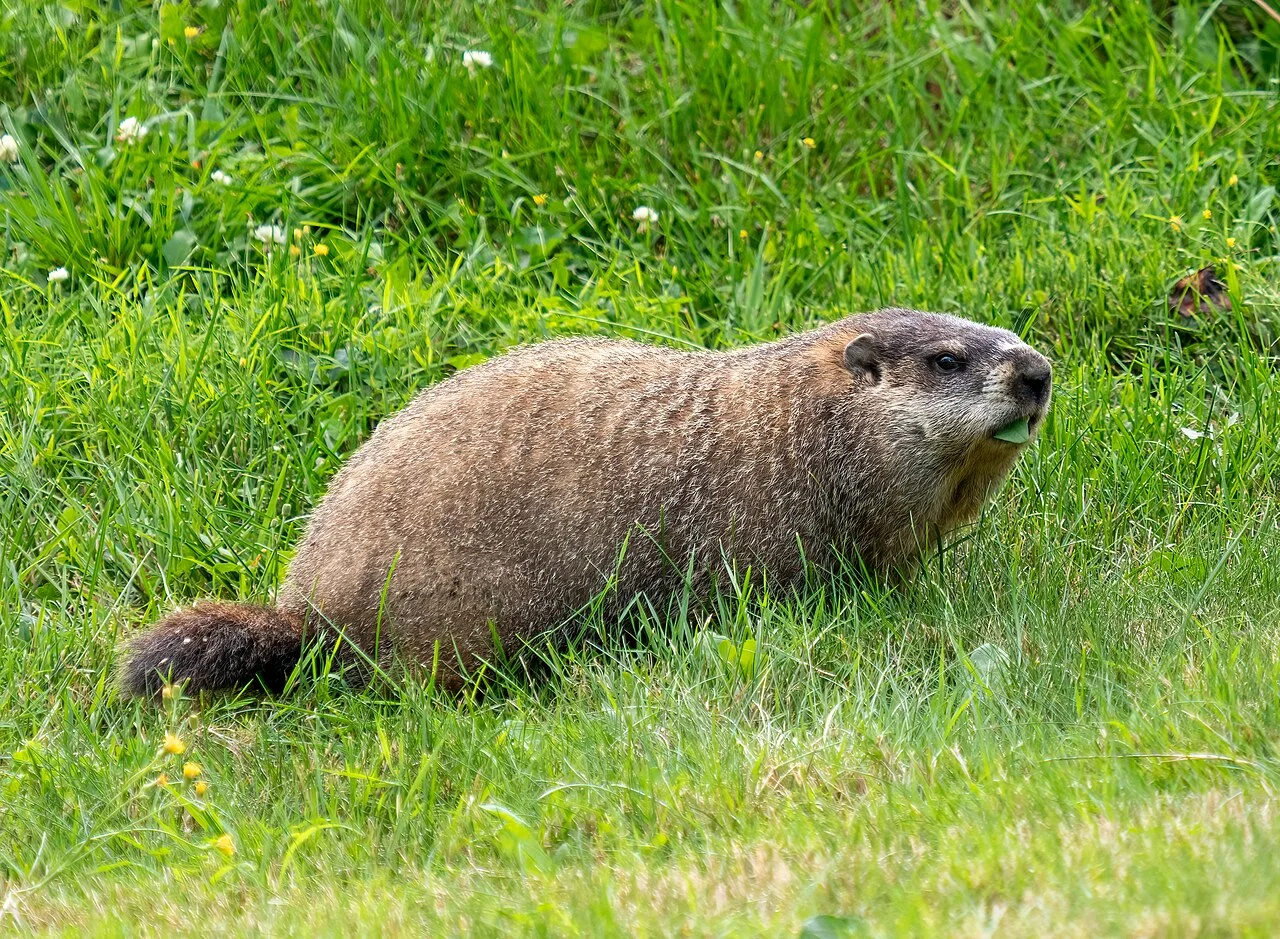
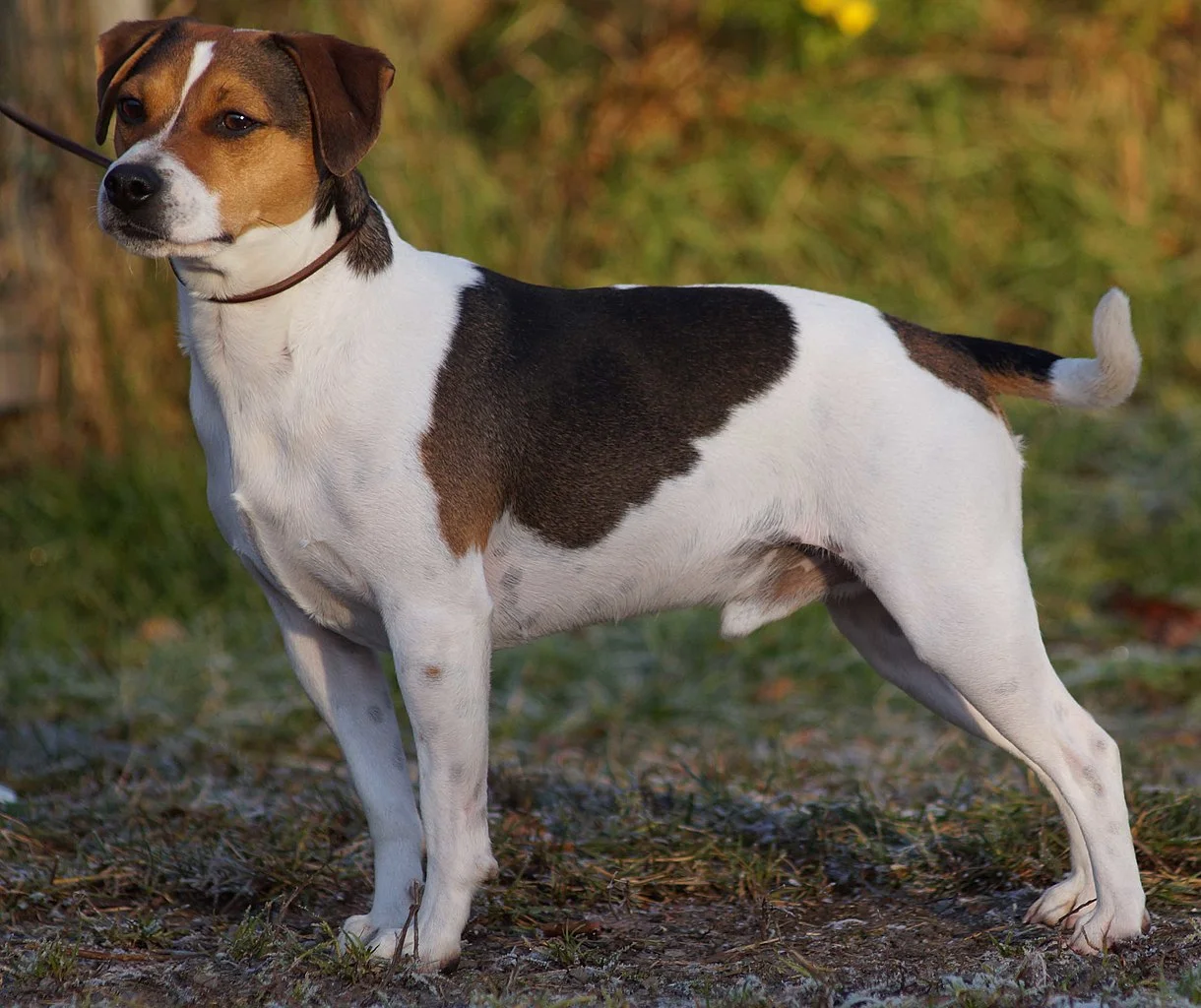
Groundhog:
Prefers wooded areas with open fields for foraging.
Common in North America, inhabiting regions with suitable burrowing conditions.
Dog:
Adaptable to various habitats based on breed:
Urban environments for companion dogs.
Rural areas for working or herding breeds.
Comparison:
Groundhogs are adapted to forested regions with accessible open spaces.
Dogs’ habitats vary widely, reflecting their roles as companions, workers, or hunters.
Ecological Implications:
Groundhog habitat preferences align with their need for sheltered burrows and suitable foraging grounds.
Dogs’ adaptability to different environments is influenced by their domestication and human interactions.
13. Tracks:
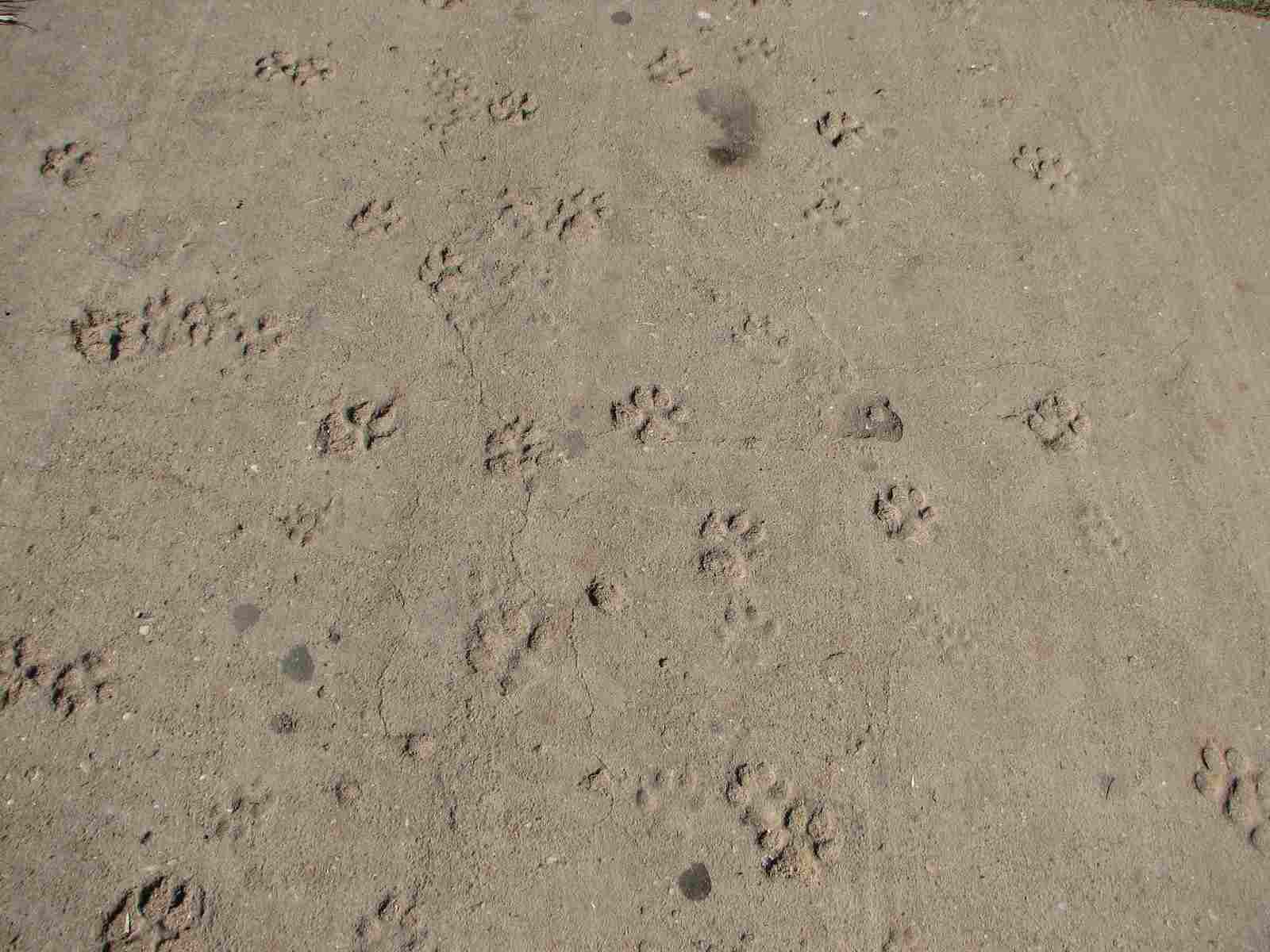
Groundhog:
Distinctive tracks with claw marks and a pattern resembling a series of circles.
Hind footprints are larger than the front, reflecting their bipedal gait.
Dog:
Tracks vary based on breed and size.
Generally have claw marks, with variations in stride length and footprint size.
Comparison:
Groundhog tracks exhibit unique patterns, reflecting their bipedal movement and burrowing habits.
Dog tracks show diversity depending on breed characteristics, but lack the distinctive patterns of groundhog tracks.
Ecological Implications:
Groundhog tracks are adapted to their burrowing and foraging behaviors.
Dog tracks may reveal information about breed, size, and movement patterns, but lack the specialized features seen in groundhog tracks.
14. Lifespan:
Groundhog:
Typically lives 2 to 3 years in the wild.
Mortality rates higher in younger individuals due to predation.
Dog:
Lifespan varies significantly by breed:
Small breeds may live around 10 to 15 years.
Larger breeds may have shorter lifespans, around 8 to 12 years.
Comparison:
Groundhogs generally have a shorter lifespan influenced by predation and environmental factors.
Dogs’ lifespans vary widely, reflecting the impact of size, genetics, and breed characteristics.
Ecological Implications:
Groundhog lifespan aligns with their reproductive strategies and predator-prey dynamics.
Dogs’ lifespans are influenced by selective breeding and care, with smaller breeds often experiencing longer lives.
15. Mode of Feeding:
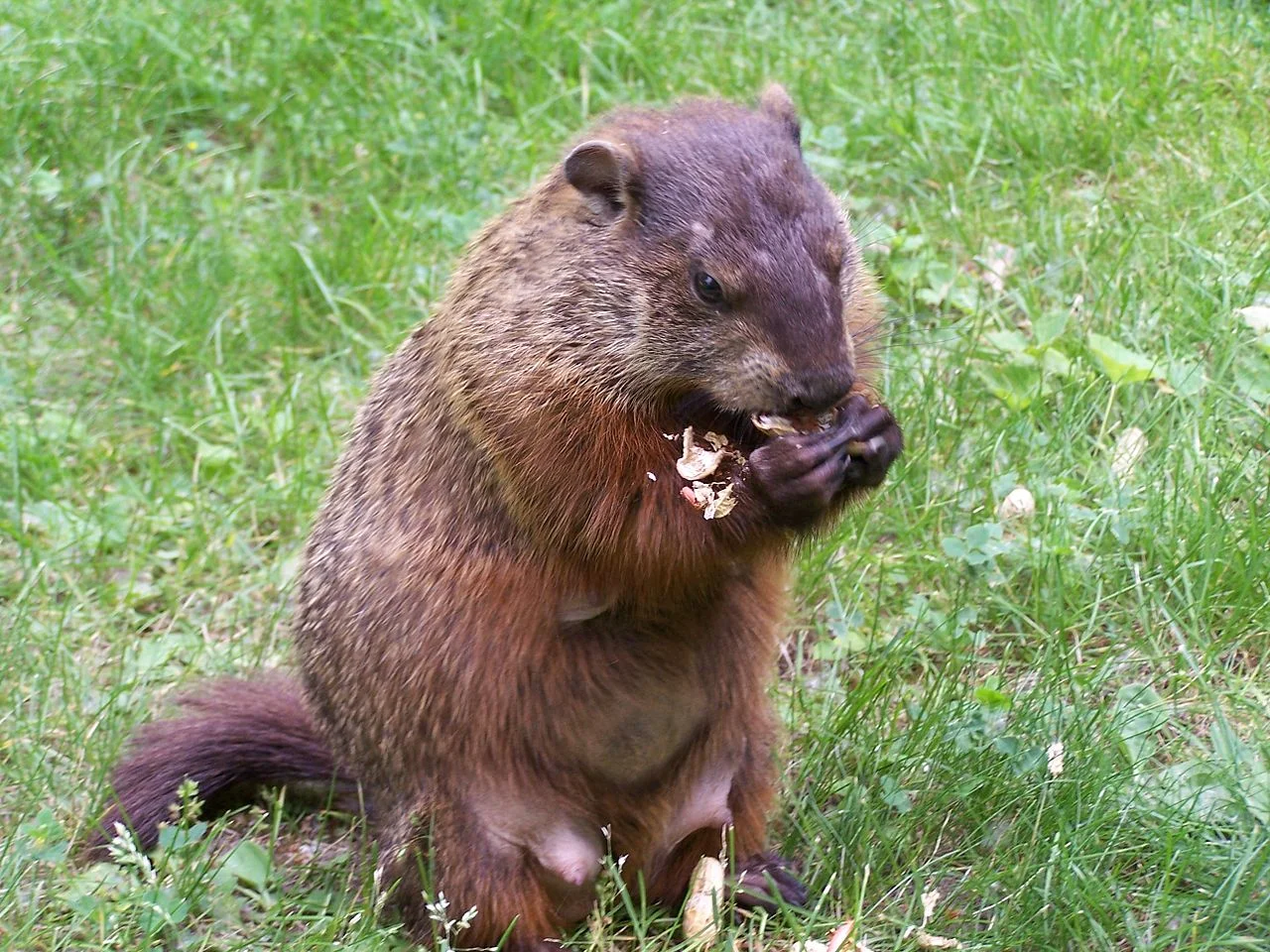
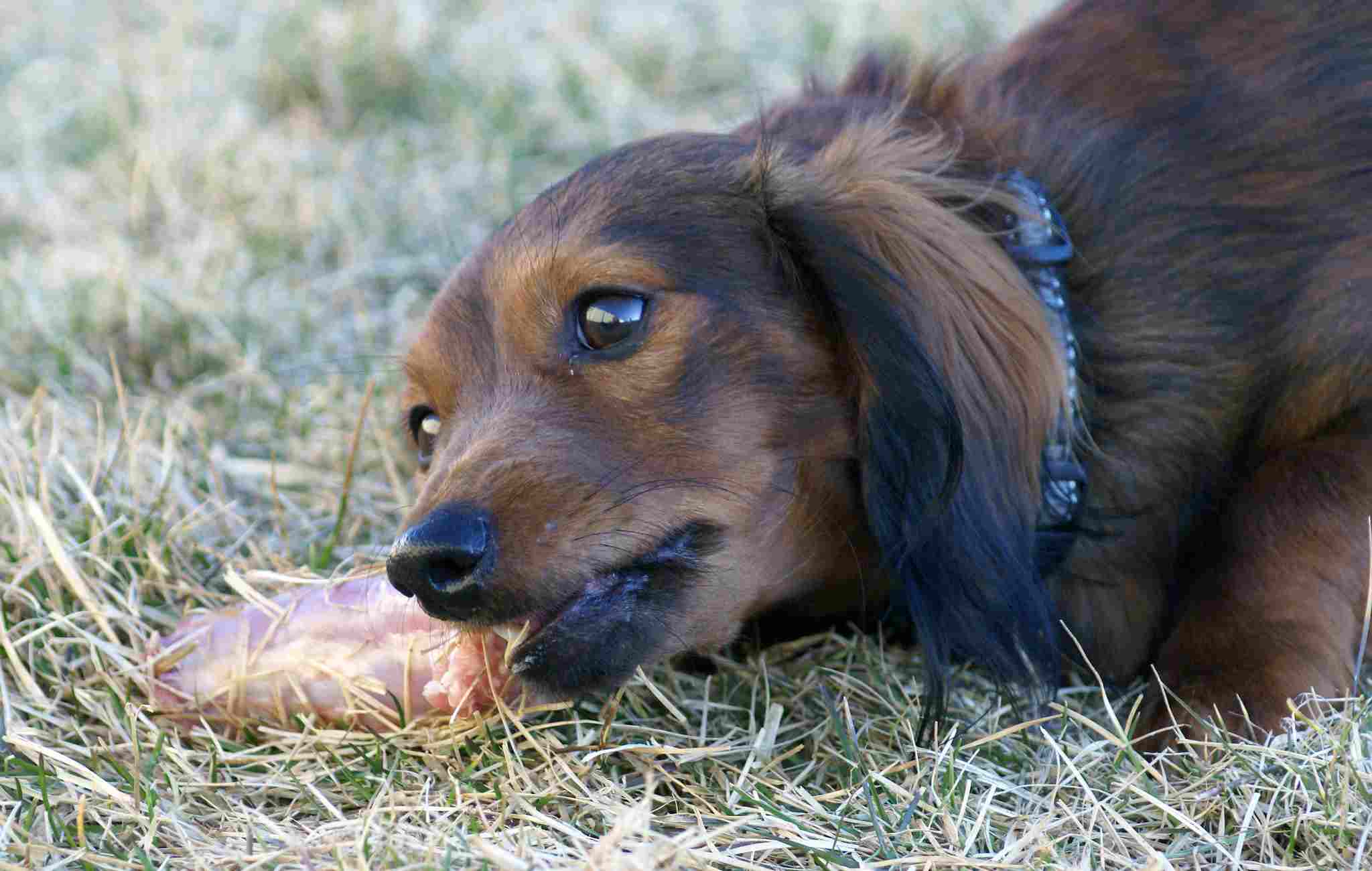
Groundhog:
Herbivorous diet primarily consisting of grasses, clover, and other vegetation.
Occasionally consumes insects and small invertebrates.
Dog:
Carnivorous by nature, but domestication has led to omnivorous tendencies.
Commercial dog food or a balanced homemade diet is typical.
Comparison:
Groundhogs are herbivores with occasional insect consumption.
Dogs, though originally carnivores, have adapted to various diets due to domestication.
Ecological Implications:
Groundhog feeding habits influence vegetation growth and insect populations in their habitat.
Dogs’ diets are influenced by human choices, impacting their health and well-being.
16. Intelligence:
Groundhog:
Display problem-solving skills, especially in building and navigating burrows.
Limited cognitive abilities compared to domesticated animals.
Dog:
Varies widely based on breed.
Highly trainable, with some breeds demonstrating advanced problem-solving and social intelligence.
Comparison:
Groundhogs exhibit intelligence tailored to survival in natural environments.
Dogs’ intelligence varies greatly, influenced by selective breeding for specific tasks and human companionship.
Ecological Implications:
Groundhog intelligence contributes to efficient burrow construction and evasion of predators.
Dogs’ intelligence enhances their ability to perform diverse roles, from herding to guarding and providing companionship.
17. Social Behavior:
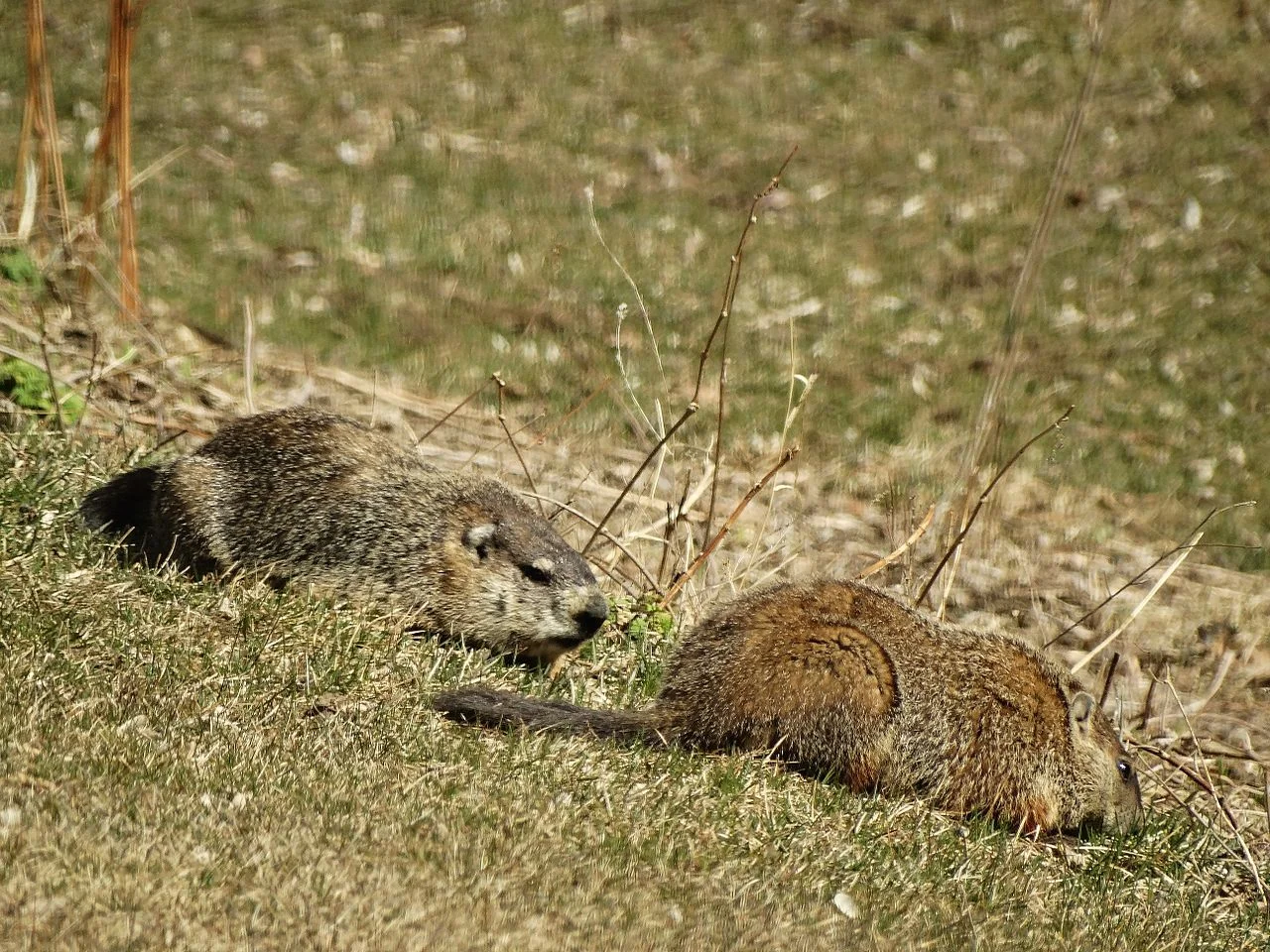
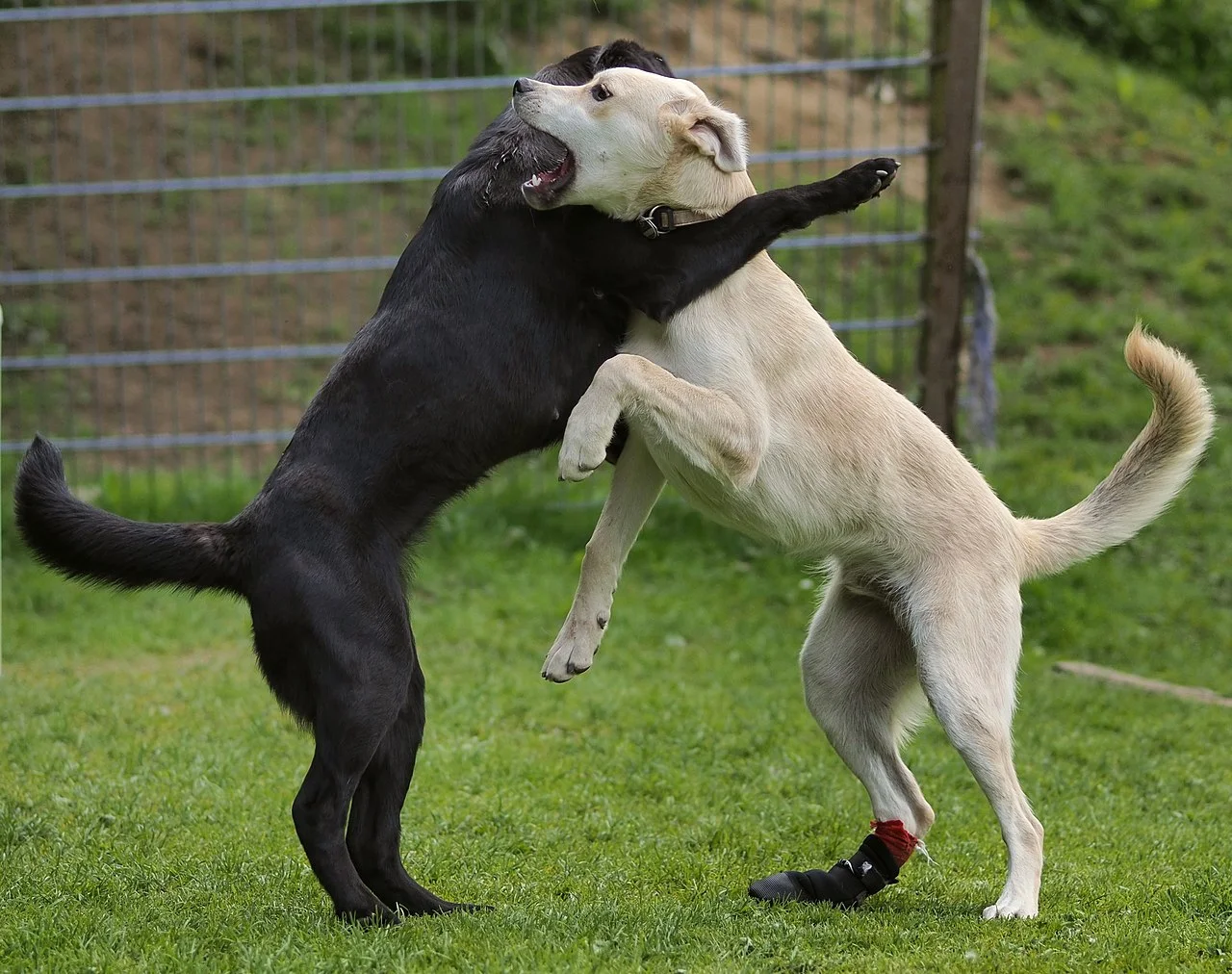
Groundhog:
Generally solitary, with limited social interactions except during the breeding season.
Females may tolerate the presence of other females in overlapping territories.
Dog:
Highly social animals, with pack instincts inherited from their wolf ancestors.
Domestic dogs often form strong bonds with humans and other dogs.
Comparison:
Groundhogs are predominantly solitary, with brief social interactions during mating.
Dogs exhibit a wide range of social behaviors, from forming packs to strong bonds with humans.
Ecological Implications:
Groundhog social behavior is adapted to minimize competition for resources.
Dogs’ social tendencies contribute to their roles as companions, working animals, and pack members.
18. Mode of Reproduction:
Groundhog:
Typically monogamous during breeding season.
Females give birth to a litter of 2 to 6 pups in early spring.
Dog:
Breeding practices vary but often involve controlled pairings.
Litters can range from a few puppies to over a dozen, depending on the breed.
Comparison:
Groundhogs exhibit a more consistent reproductive strategy with smaller litters.
Dogs’ reproduction is influenced by human breeding practices, resulting in diverse litter sizes.
Ecological Implications:
Groundhog reproductive patterns align with seasonal availability of resources in their habitats.
Dogs’ reproduction is influenced by human preferences and the purpose of breeding, impacting population dynamics.
19. Parental Behavior:
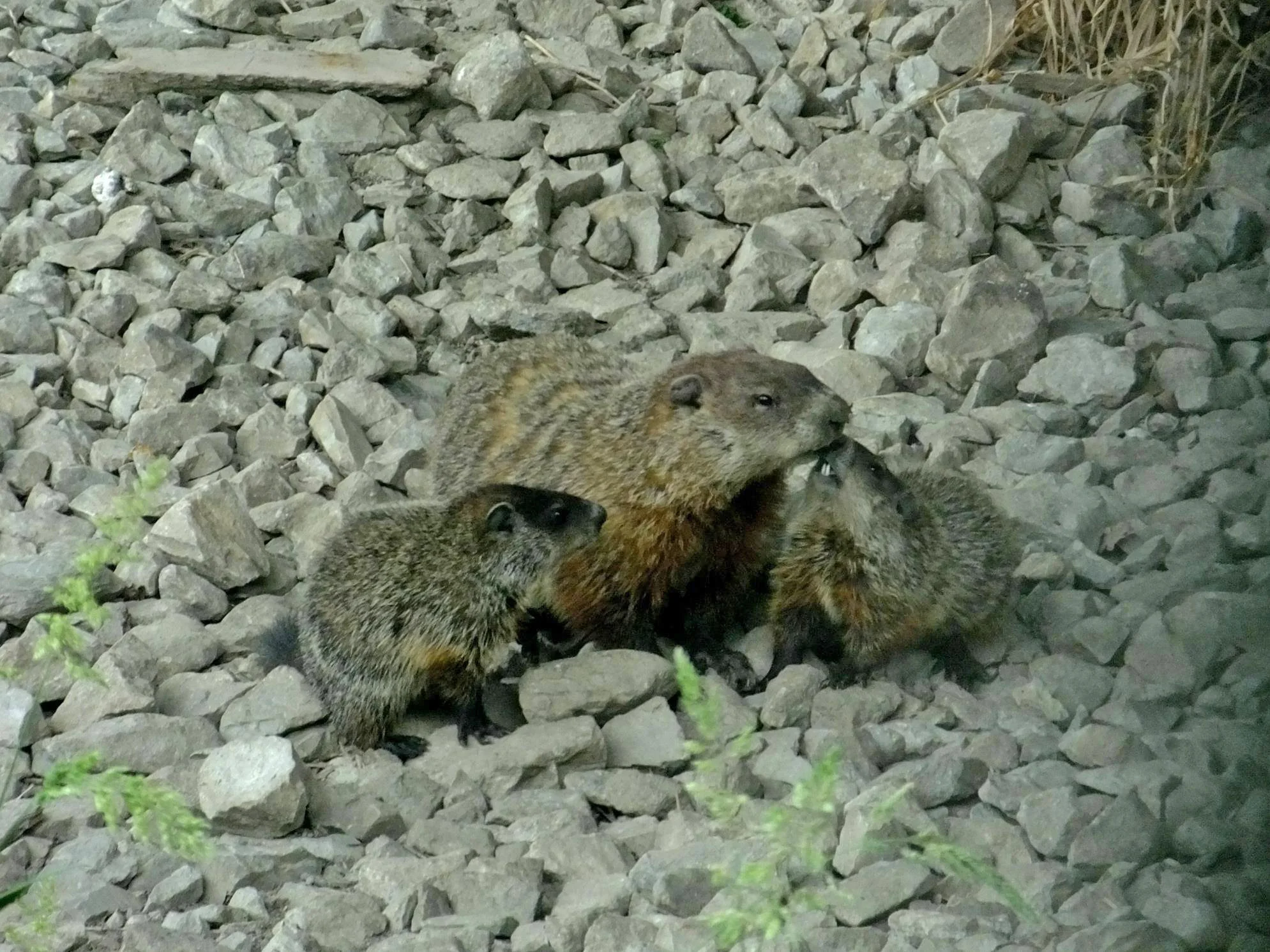
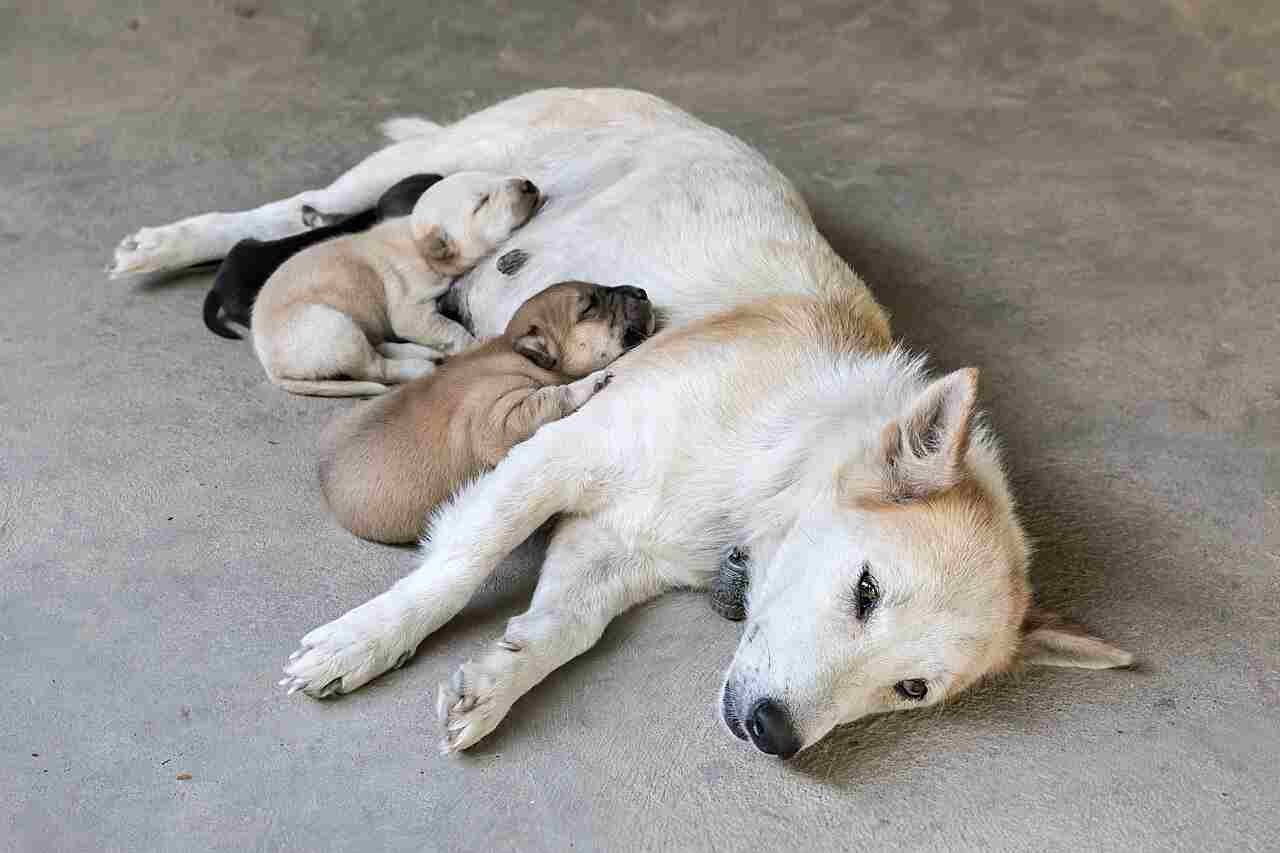
Groundhog:
Females invest in burrow construction for protection.
Provide care and protection to the young until they are weaned.
Dog:
Varied parental behaviors based on breed and individual characteristics.
Domestic dogs often receive assistance from human caregivers in raising and caring for pups.
Comparison:
Groundhog parental behavior is centered around burrow protection and maternal care.
Dogs’ parental behaviors can vary widely, influenced by breed characteristics and human involvement.
Ecological Implications:
Groundhog parental care enhances pup survival in natural environments.
Dogs’ parental behaviors may be influenced by human intervention, impacting the well-being of the offspring.
20. Proximity to Human-Inhabited Areas:
Groundhog:
Can adapt to suburban and urban areas with suitable vegetation and open spaces.
Burrows may be found in yards, gardens, or under structures.
Dog:
Domesticated and commonly found in human-inhabited areas as pets or working animals.
Various breeds adapted to different living conditions.
Comparison:
Groundhogs may encroach on human spaces seeking suitable habitats.
Dogs, especially as pets, have a close relationship with humans and inhabit homes and urban environments.
Ecological Implications:
Groundhogs’ adaptation to human-inhabited areas can lead to conflicts due to burrowing activities.
Dogs’ proximity to humans reflects their domestication history and roles as companions or working animals.
21. Behavior Toward Humans:
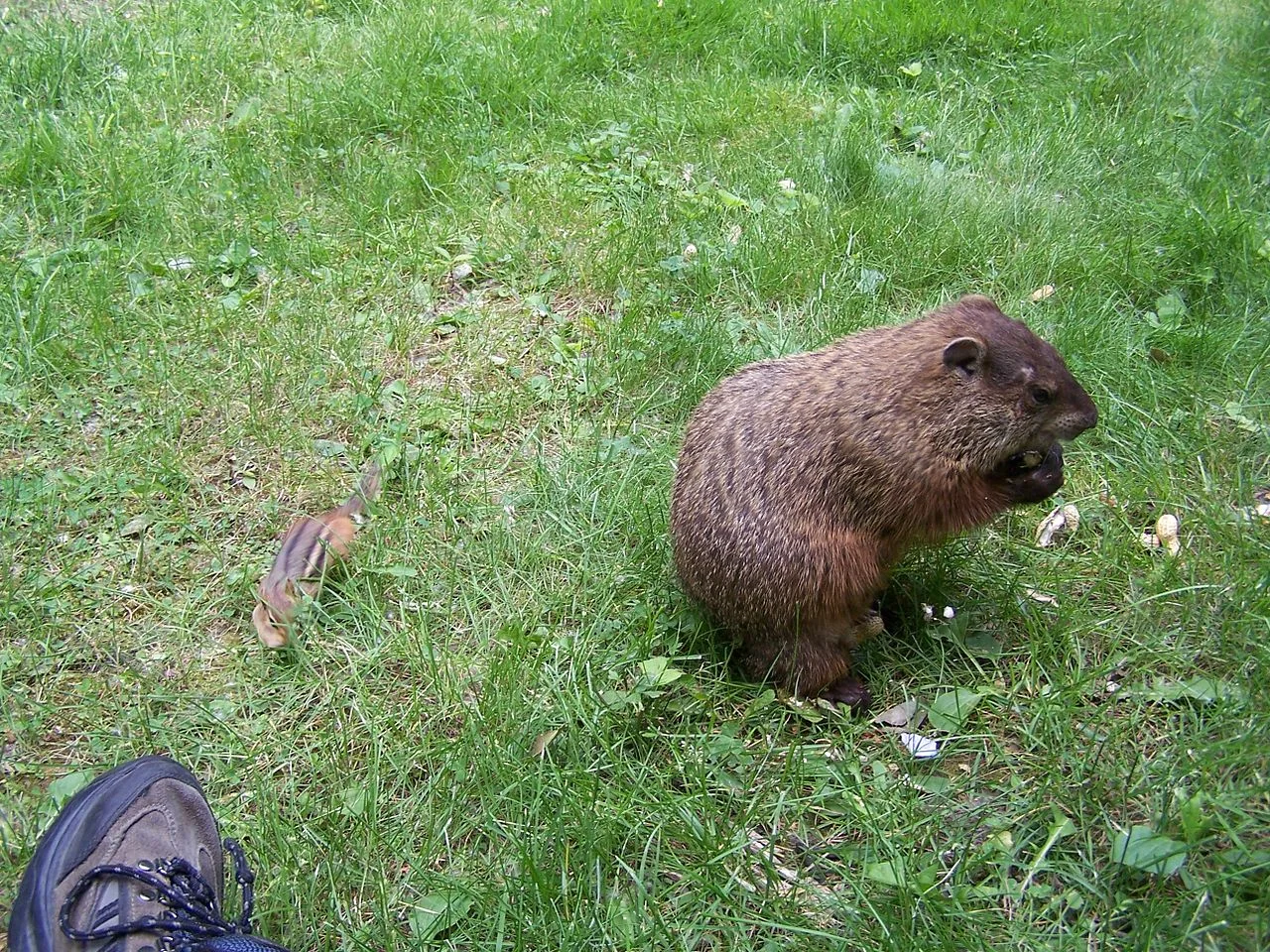
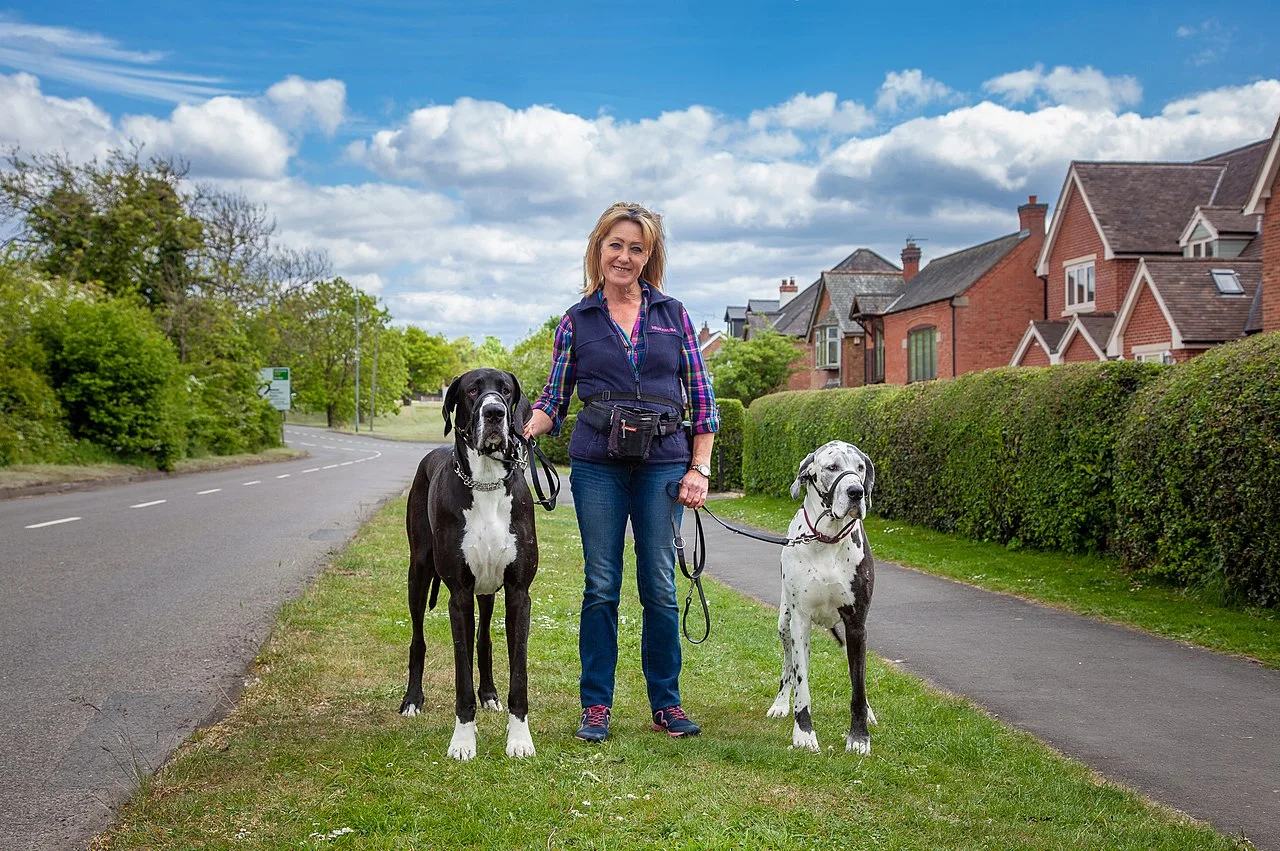
Groundhog:
Generally shy and wary of humans, often retreating to burrows when approached.
May display aggression if cornered or threatened.
Dog:
Exhibits a wide range of behaviors:
Can be friendly, protective, or reserved, depending on breed and individual temperament.
Domestic dogs are often socialized to interact positively with humans.
Comparison:
Groundhogs tend to avoid human interaction and may display defensive behaviors.
Dogs’ behavior towards humans varies widely based on their breeding, socialization, and individual temperament.
Ecological Implications:
Groundhog avoidance of humans helps in minimizing conflicts and potential threats.
Dogs’ behavior towards humans is shaped by domestication and can impact their roles as companions or working animals.
22. Danger Posed to Humans:
Groundhog:
Generally not considered dangerous to humans.
May bite if cornered or feel threatened, but injuries are typically minor.
Dog:
Varies based on individual temperament and training.
Can pose a danger if aggressive, especially in certain breeds without proper socialization and training.
Comparison:
Groundhogs pose minimal danger, with aggression as a last resort for self-defense.
Dogs’ danger levels vary widely, influenced by breed characteristics, training, and socialization.
Ecological Implications:
Groundhogs’ minimal threat to humans aligns with their tendency to avoid confrontations.
Dogs’ potential danger underscores the importance of responsible ownership, training, and socialization.
23. Associated Precautions:
Groundhog:
Humans should avoid cornering or attempting to handle wild groundhogs.
Secure trash bins to prevent foraging.
Dog:
Precautions depend on the individual dog’s behavior, breed, and training.
Leash laws, proper socialization, and training reduce potential risks.
Comparison:
Groundhog precautions involve minimizing interactions and securing attractants.
Dog precautions encompass responsible ownership practices, considering individual temperament and breed characteristics.
Ecological Implications:
Groundhog precautions focus on coexistence, recognizing their role in ecosystems.
Dog precautions aim to ensure safe interactions between humans, dogs, and the environment.
24. Conservation Status:
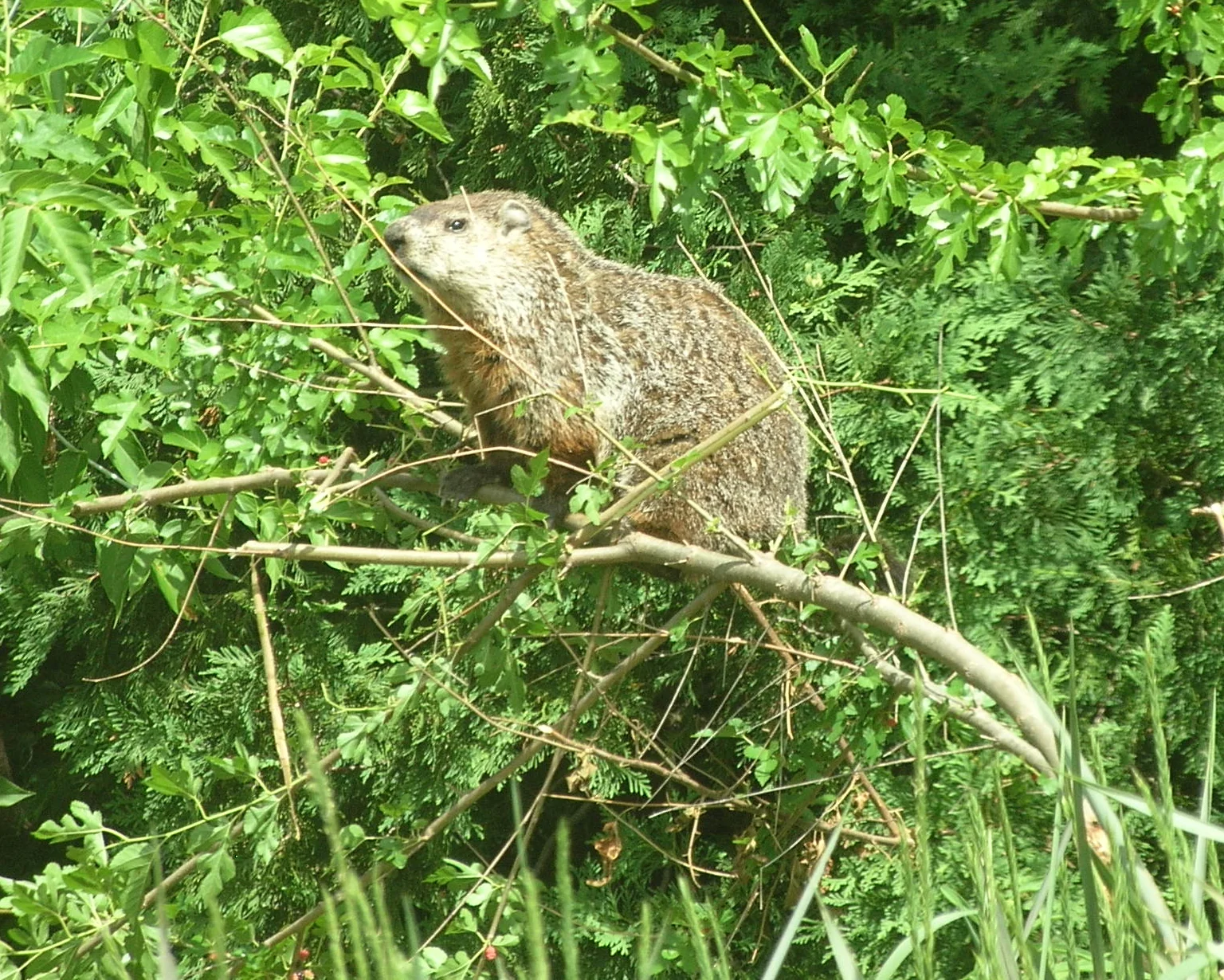
Groundhog:
Not classified under conservation concern.
Population stability is influenced by habitat preservation and minimal human impact.
Dog:
Domesticated dogs are not assessed for conservation status.
Wild canid species, such as the red wolf, may have conservation concerns.
Comparison:
Groundhogs, being widespread and not endangered, lack conservation status.
Conservation focuses on wild canids and not domesticated dogs.
Ecological Implications:
Groundhog population stability reflects the balance in their ecosystem.
Conservation efforts for wild canids aim to preserve biodiversity and ecological roles.
*Summary of Comparison
Appearance:
Groundhogs: Stout, low-to-the-ground build with brown fur, adapted for burrowing.
Dogs: Diverse appearances based on breeds, shaped by human preferences and functions.
Size:
Groundhogs: Typically 16 to 26 inches, 4 to 9 pounds.
Dogs: Varies widely by breed, classified as small to giant.
Weight:
Groundhogs: Consistent weight range, 4 to 9 pounds.
Dogs: Broad weight spectrum, reflecting roles and breed characteristics.
Dentition and Bite Force (PSI):
Groundhogs: Herbivorous dentition, limited bite force.
Dogs: Carnivorous dentition, variable bite force among breeds.
Physical Offensive Advantages:
Groundhogs: Claws for digging, biting if threatened.
Dogs: Varied offensive capabilities based on breed and role.
Physical Defensive Advantages:
Groundhogs: Agility and burrow construction.
Dogs: Varied defensive behaviors, including barking, agility, and loyalty.
Speed:
Groundhogs: Moderate speed for survival in wooded areas.
Dogs: Wide range of speeds, breed-dependent.
Agility:
Groundhogs: Highly agile for navigating wooded environments.
Dogs: Varying agility based on breed purposes.
Senses:
Groundhogs: Reliant on sense of smell, good hearing, and vision.
Dogs: Diverse sensory strengths based on breeds, often keen sense of smell.
Overall Physical Capacity:
Groundhogs: Specialized for burrowing and agility.
Dogs: Versatile physical capacities influenced by breed roles.
Habitat Preference(s) and Geographic Region:
Groundhogs: Wooded areas with open spaces, common in North America.
Dogs: Adaptable to various habitats, influenced by breed and human preferences.
Tracks:
Groundhogs: Distinctive tracks with claw marks, reflecting bipedal movement.
Dogs: Diverse tracks based on breed, lacking groundhog’s distinctive patterns.
Lifespan:
Groundhogs: 2 to 3 years in the wild.
Dogs: Varied lifespans by breed, impacted by size and genetics.
Mode of Feeding:
Groundhogs: Herbivores with occasional insect consumption.
Dogs: Originally carnivores, adapted to various diets due to domestication.
Intelligence:
Groundhogs: Problem-solving skills for burrow construction.
Dogs: Varying intelligence, highly trainable with diverse roles.
Social Behavior:
Groundhogs: Generally solitary with brief social interactions during mating.
Dogs: Highly social, forming bonds with humans and other dogs.
Mode of Reproduction:
Groundhogs: Typically monogamous with smaller litters.
Dogs: Breeding practices vary, resulting in diverse litter sizes.
Parental Behavior:
Groundhogs: Maternal care and protection in burrows.
Dogs: Varied parental behaviors influenced by breed and individual characteristics.
Proximity to Human-Inhabited Areas:
Groundhogs: Adaptable to suburban and urban areas.
Dogs: Commonly found in human-inhabited areas as pets or working animals.
Behavior Toward Humans:
Groundhogs: Generally shy and wary, may display aggression if threatened.
Dogs: Diverse behaviors based on breed, training, and individual temperament.
Danger Posed to Humans:
Groundhogs: Minimal danger, may bite if threatened.
Dogs: Variable danger levels based on breed and individual factors.
Associated Precautions:
Groundhogs: Minimize interactions and secure attractants.
Dogs: Responsible ownership, leash laws, socialization, and training.
Conservation Status:
Groundhogs: Not classified, stable population influenced by habitat.
Dogs: Domesticated dogs not assessed for conservation; wild canids may have conservation concerns.
Conclusion
I. Similarities:
Both groundhogs and dogs display adaptability to various environments.
They contribute to their ecosystems, with groundhogs influencing vegetation and dogs showcasing diverse roles shaped by humans.
II. Differences:
Groundhogs are wild rodents with specific ecological roles, while dogs are domesticated with diverse roles, from companionship to working tasks.
The ecological implications of their behaviors and characteristics highlight the intricate balance between wildlife and human-inhabited spaces.
